
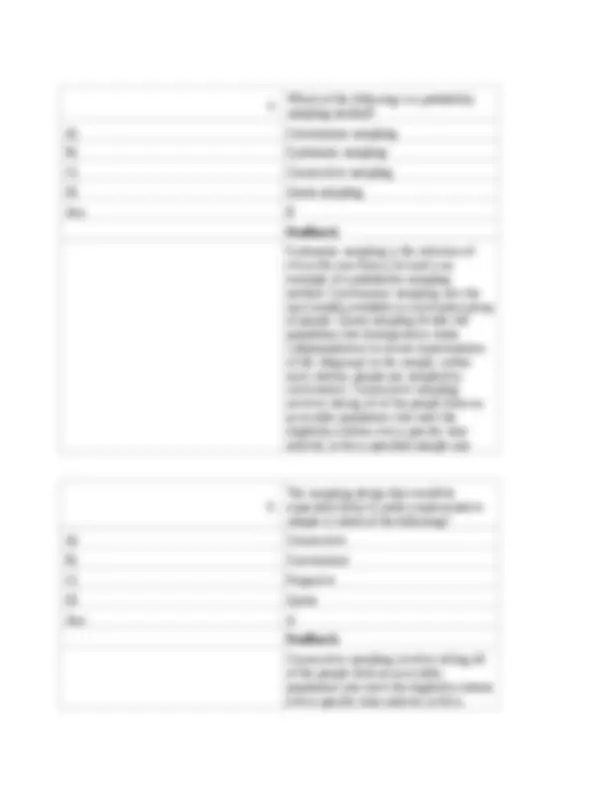
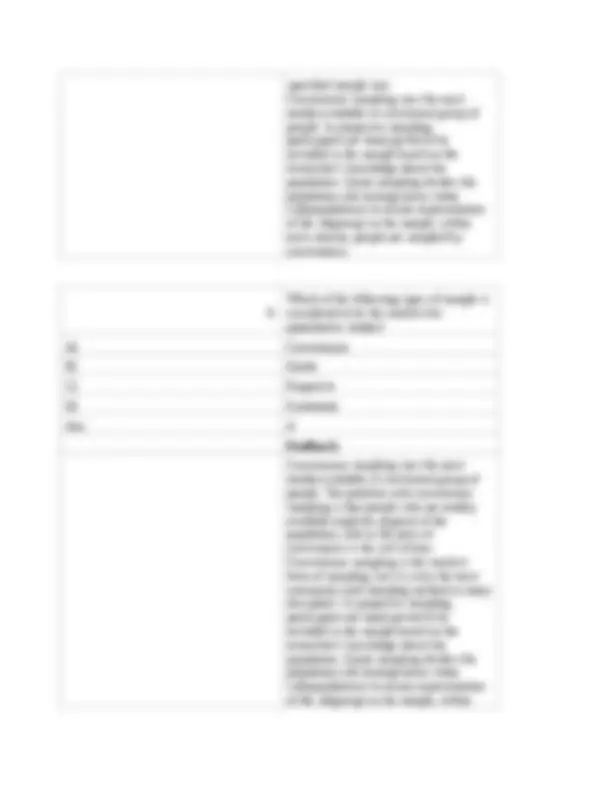
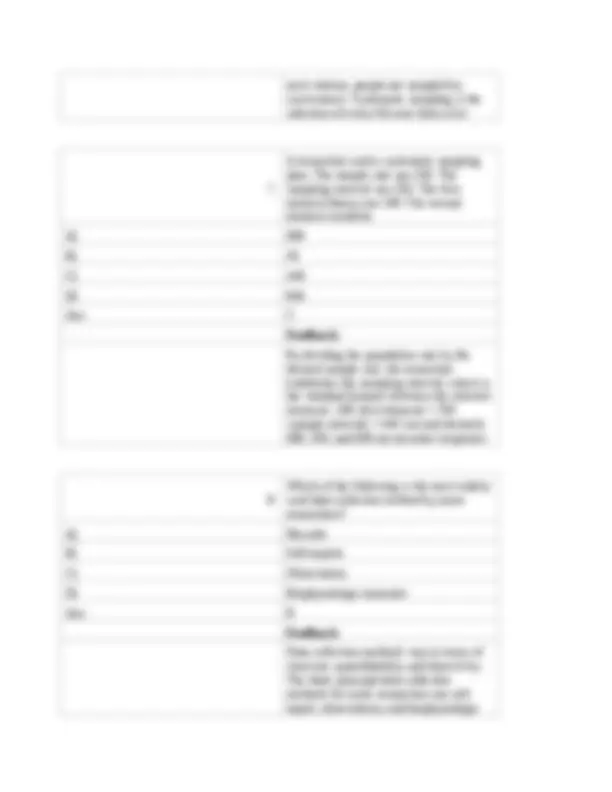
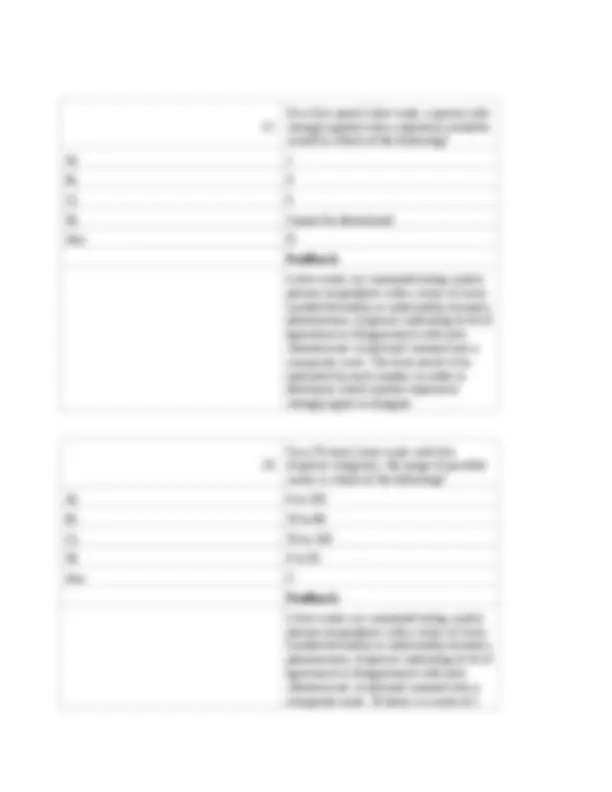
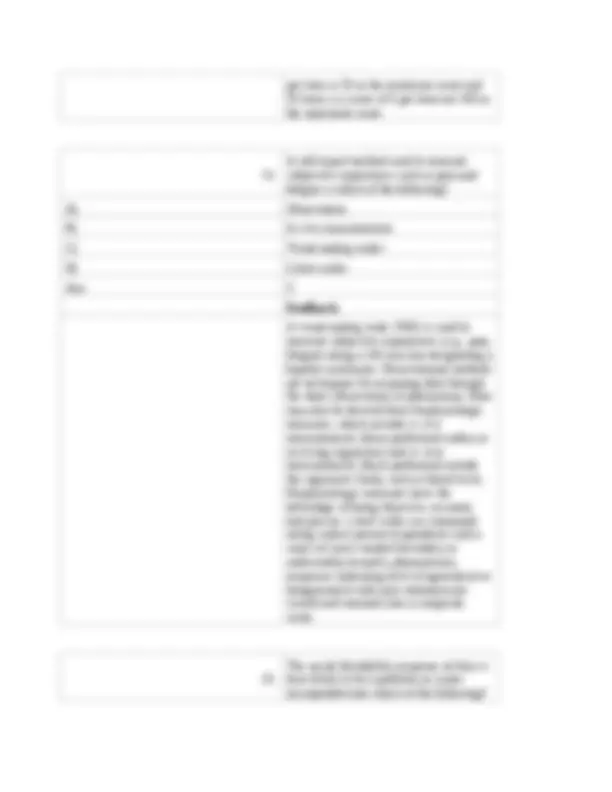
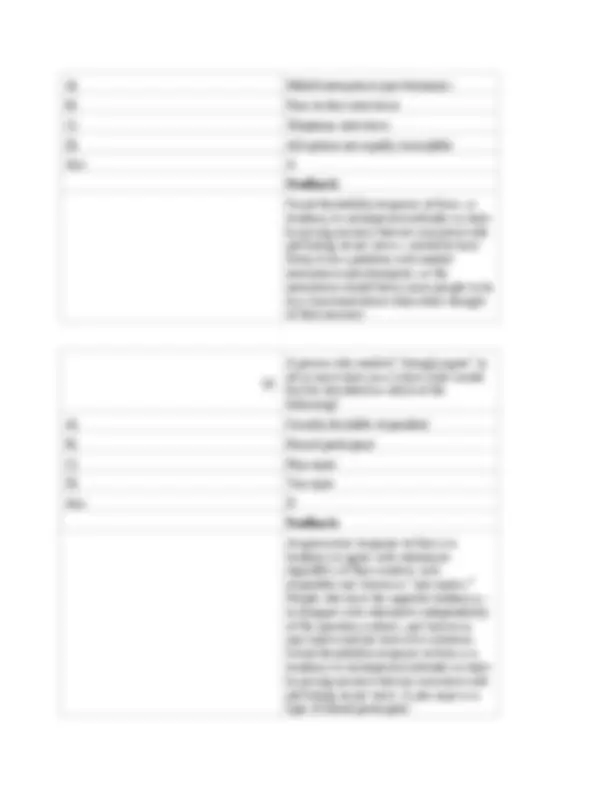
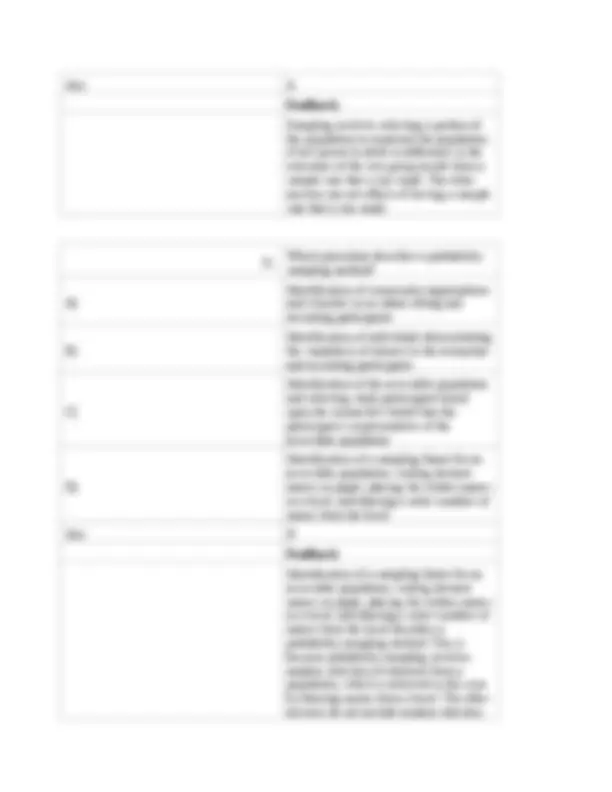
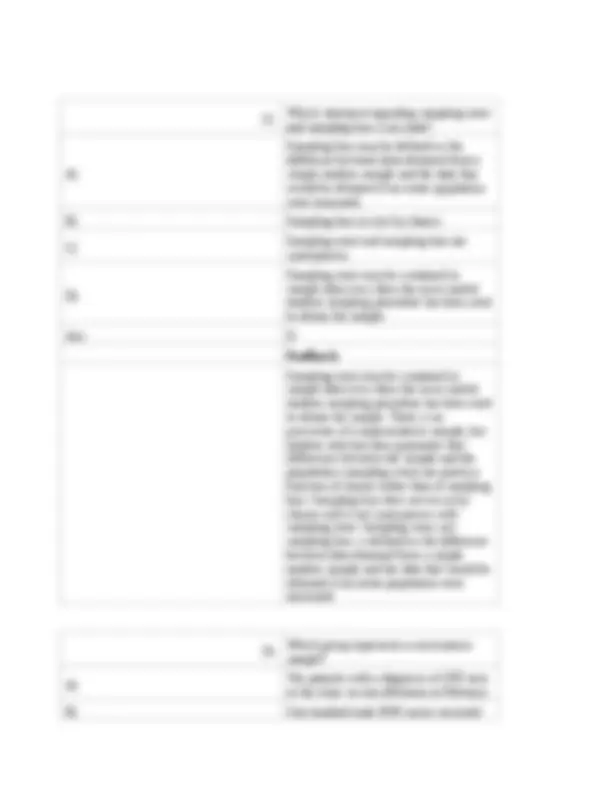
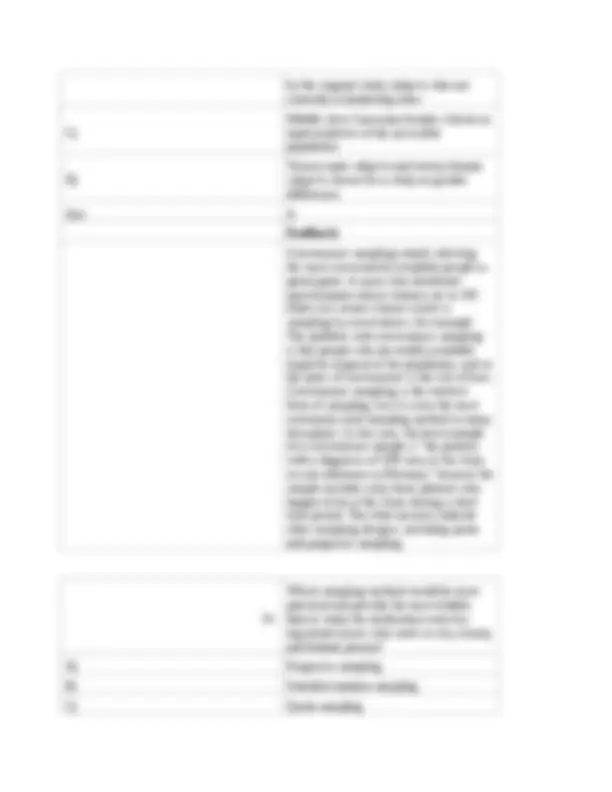
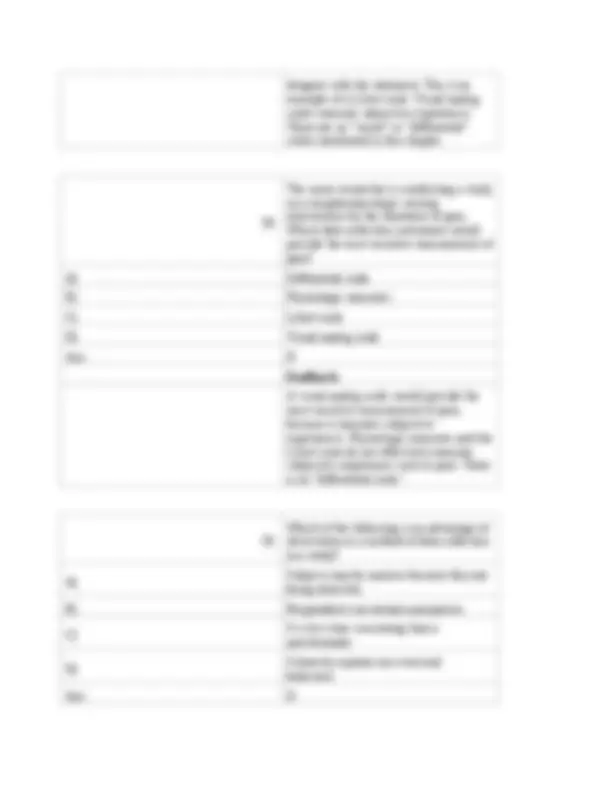
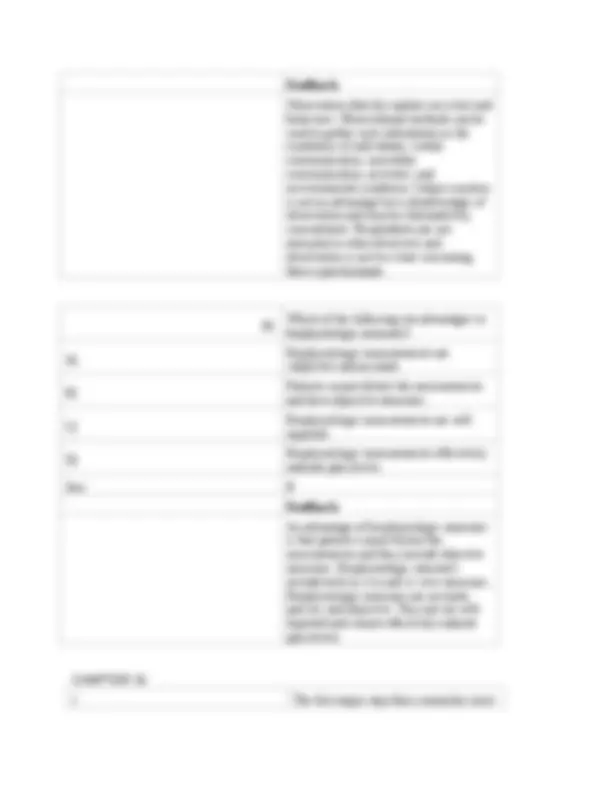
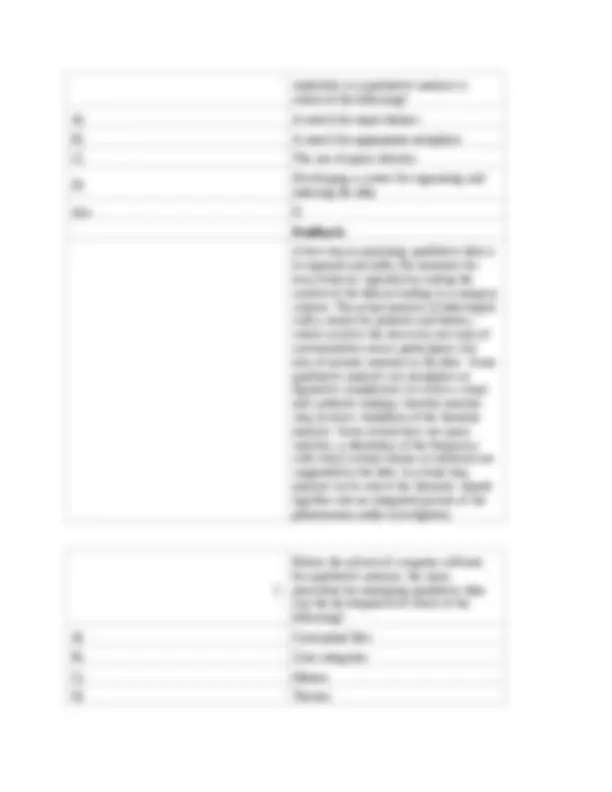
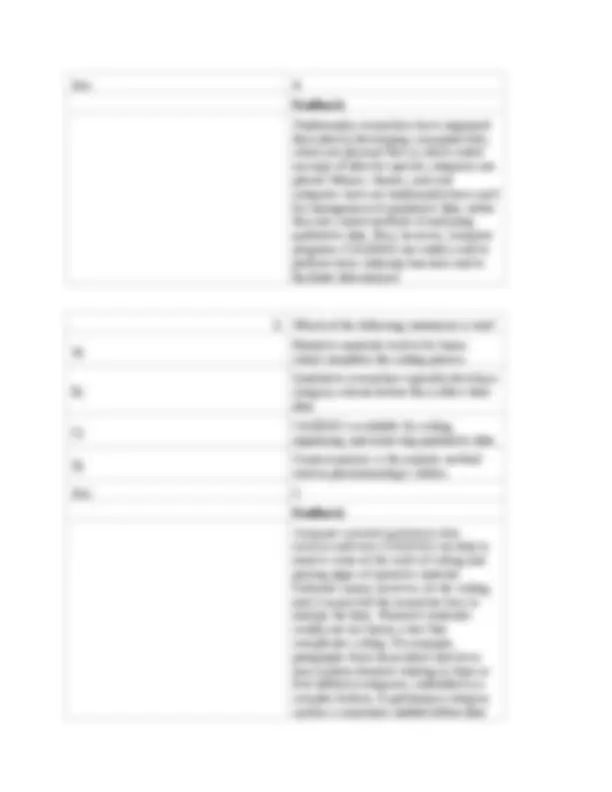
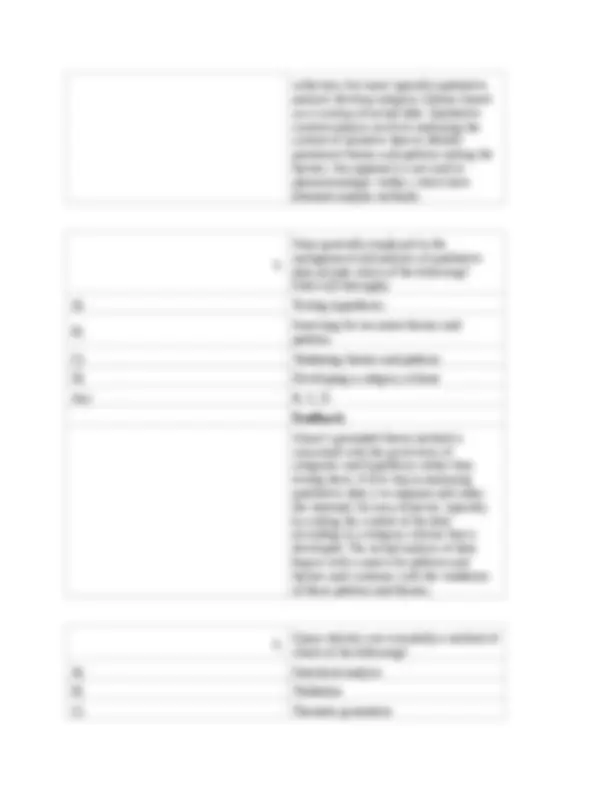
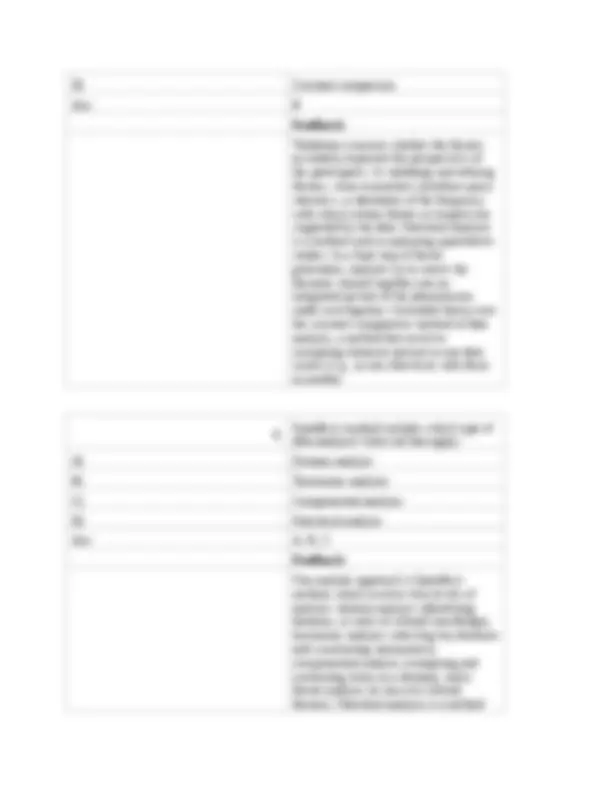
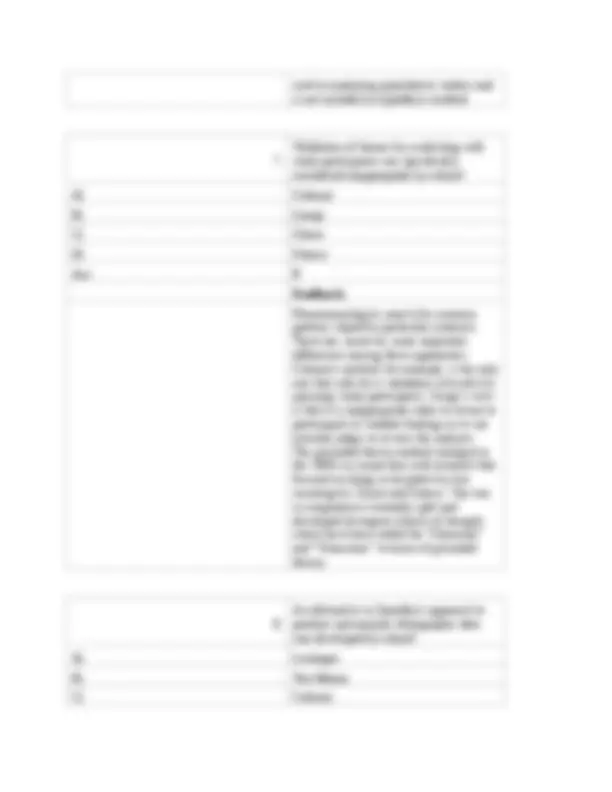
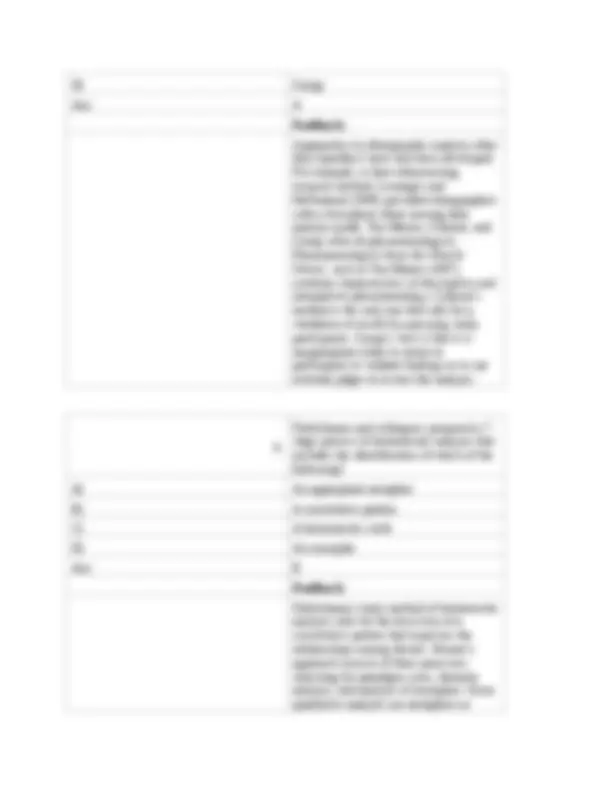
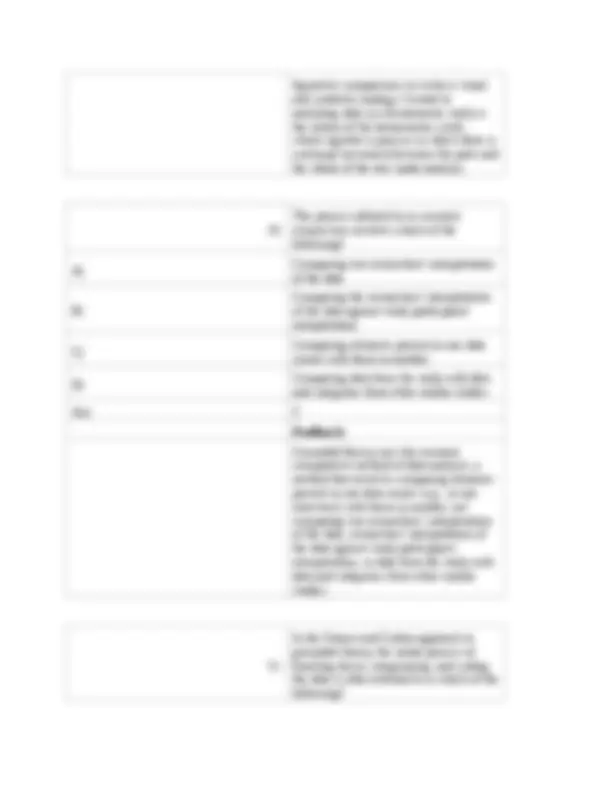
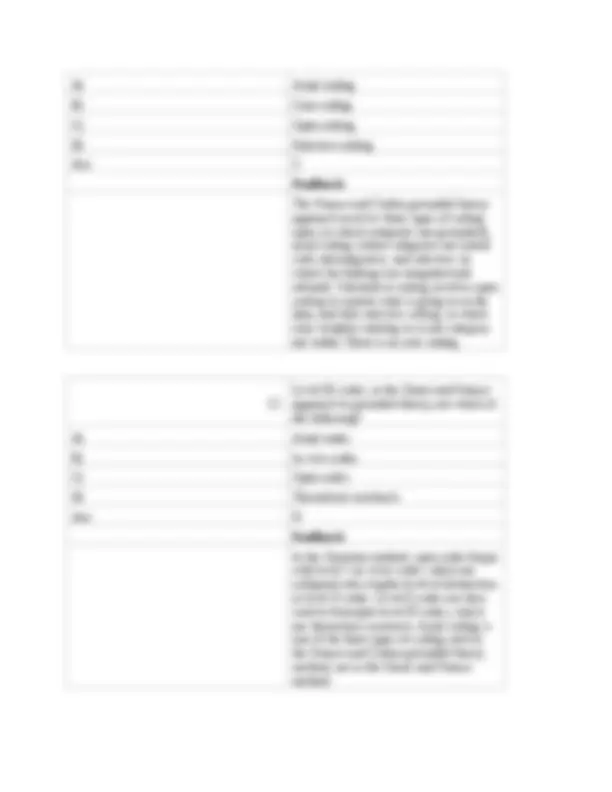
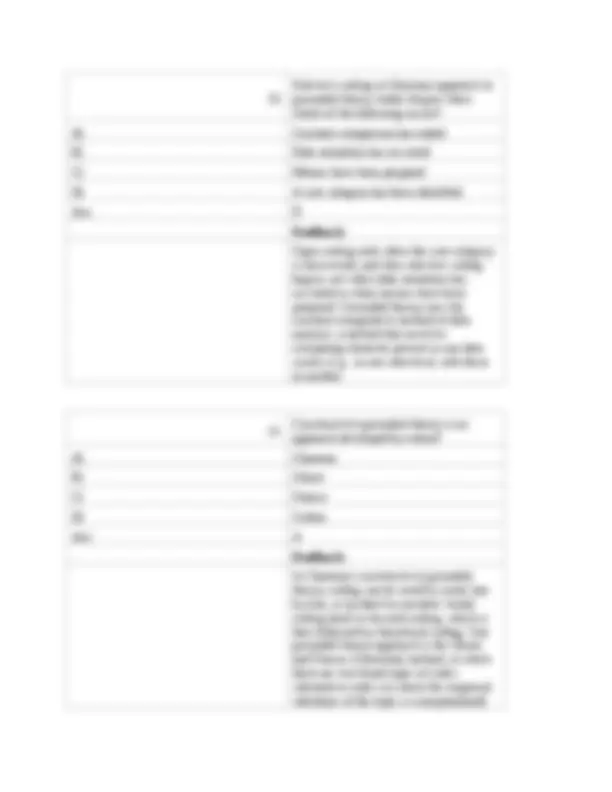
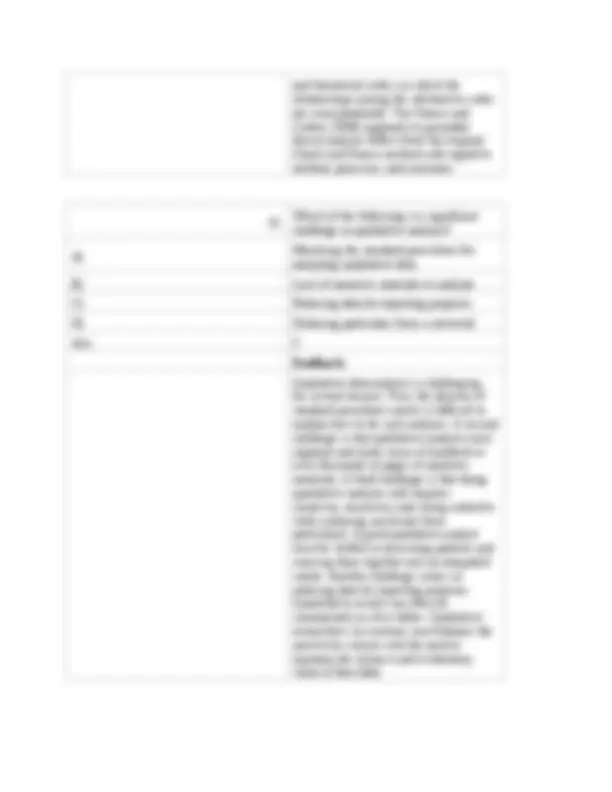
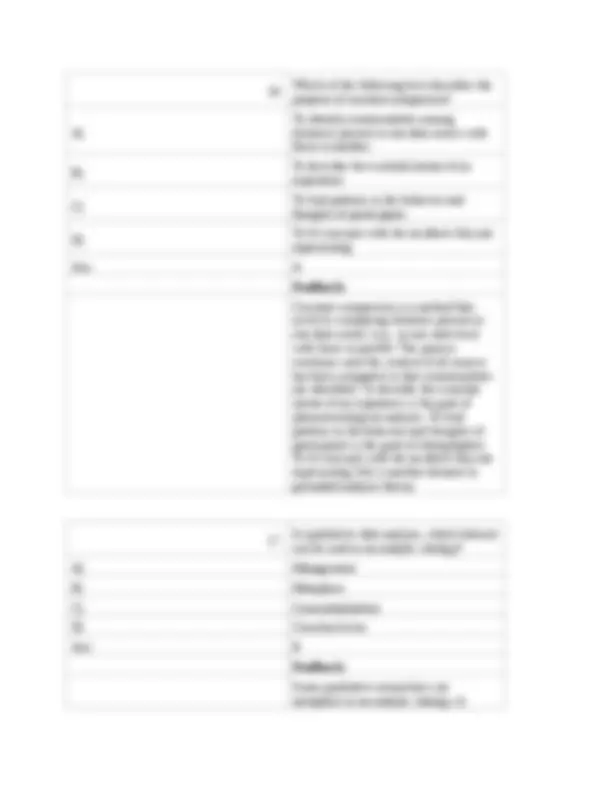
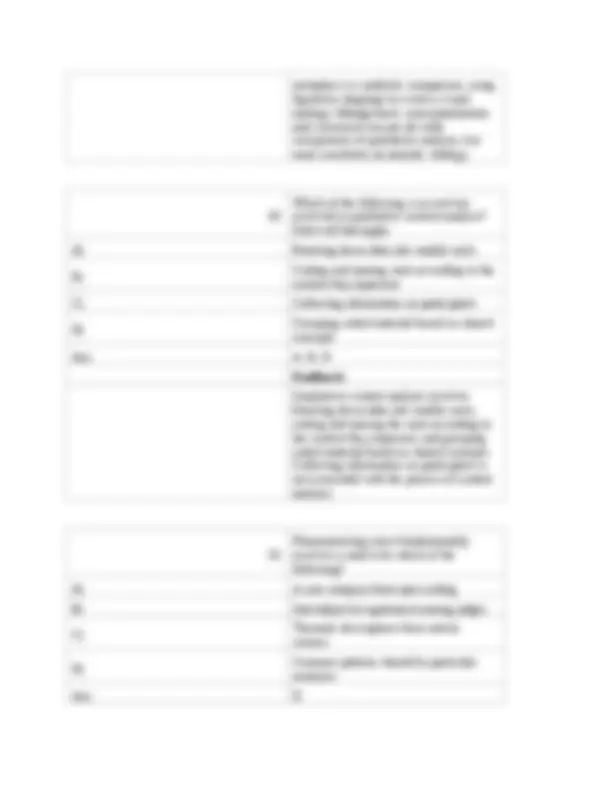
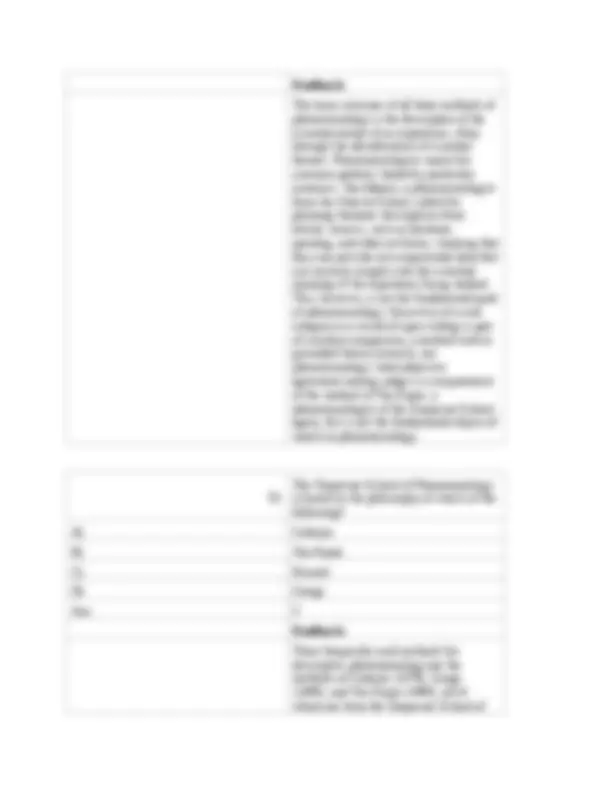

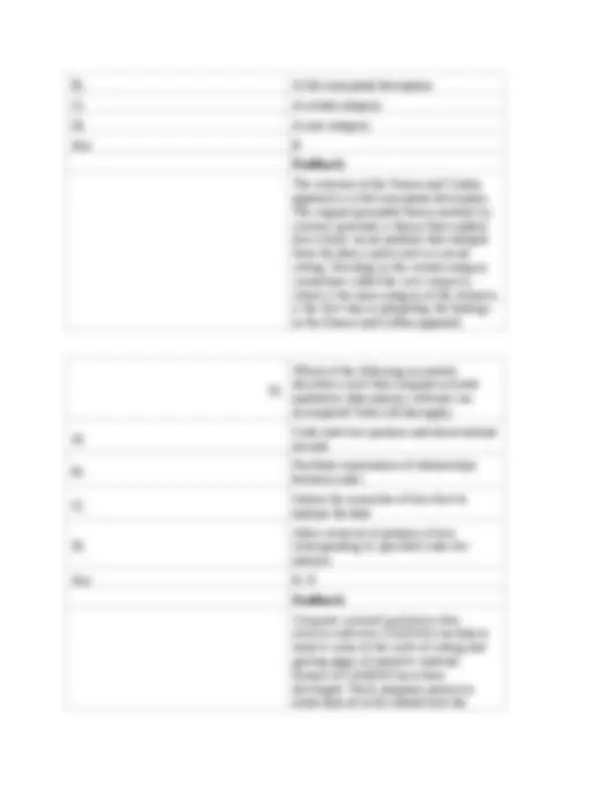
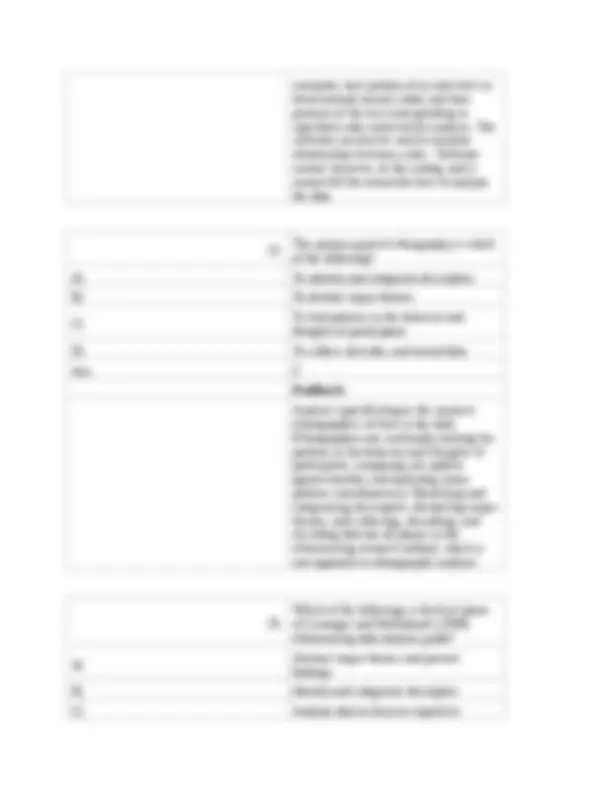
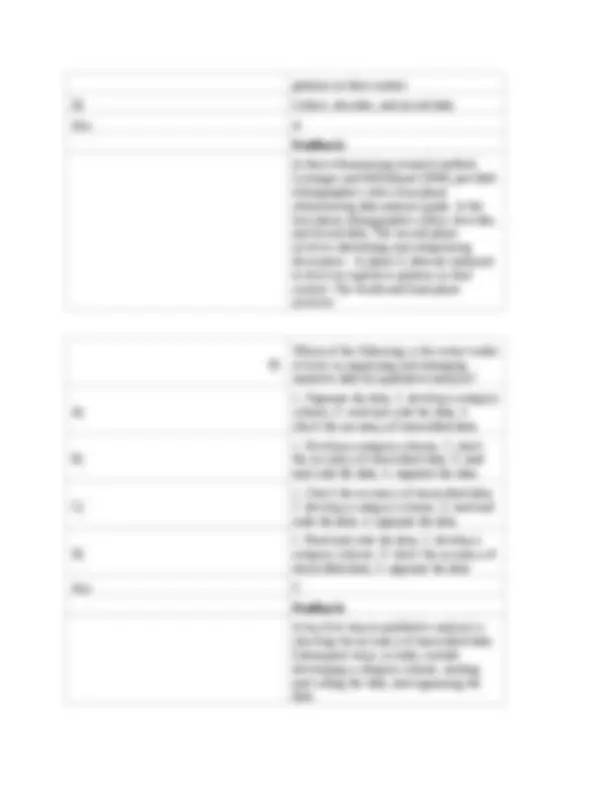
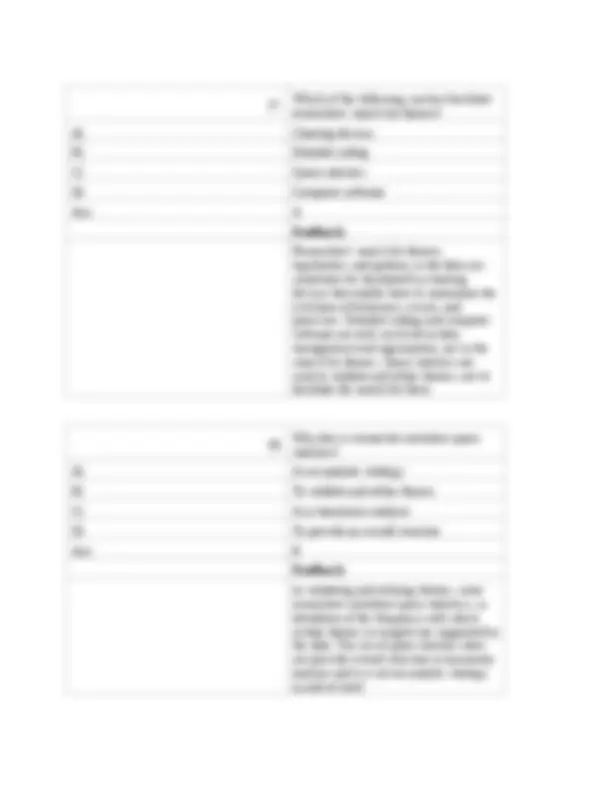
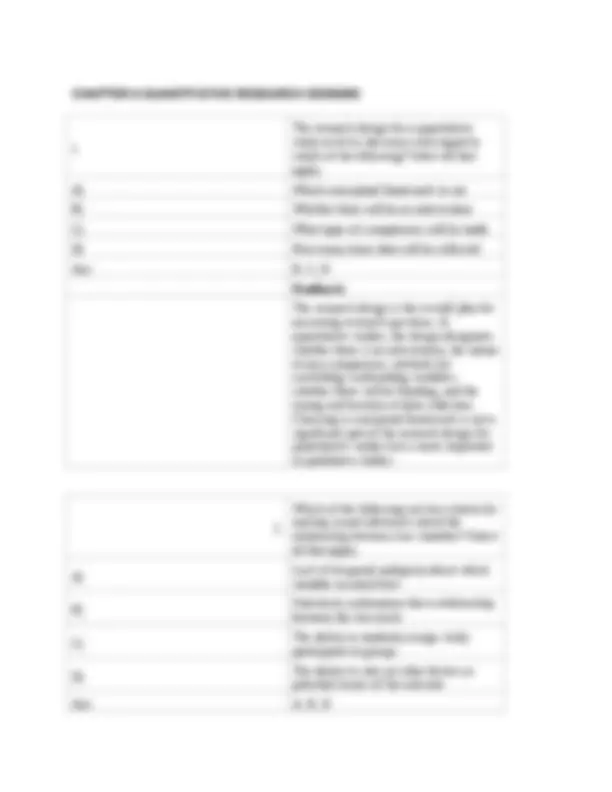
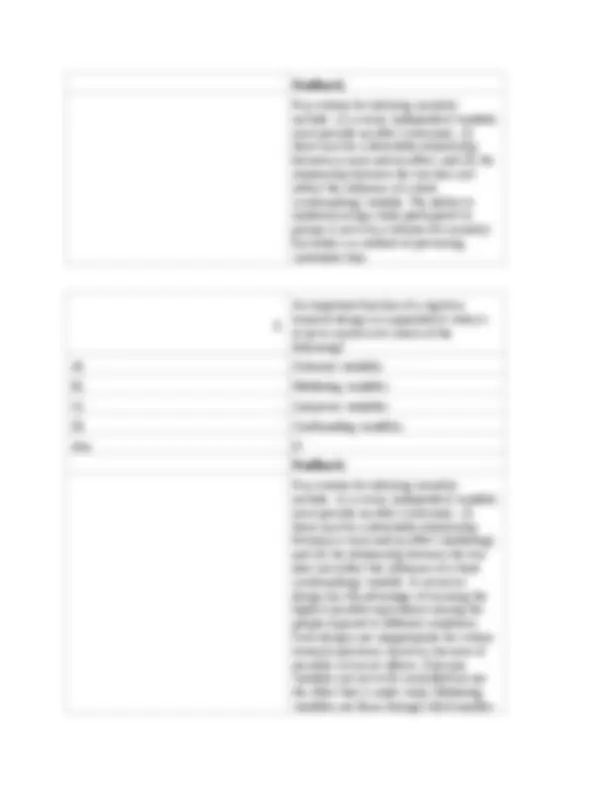
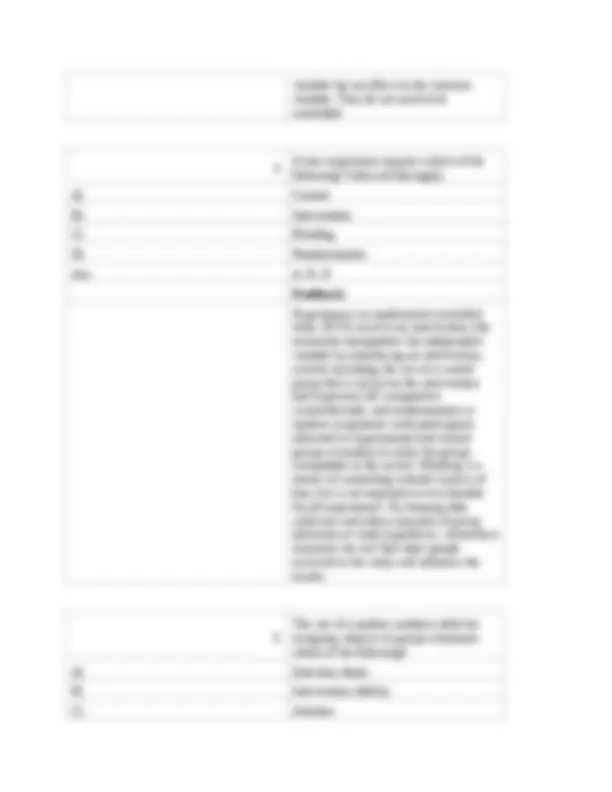
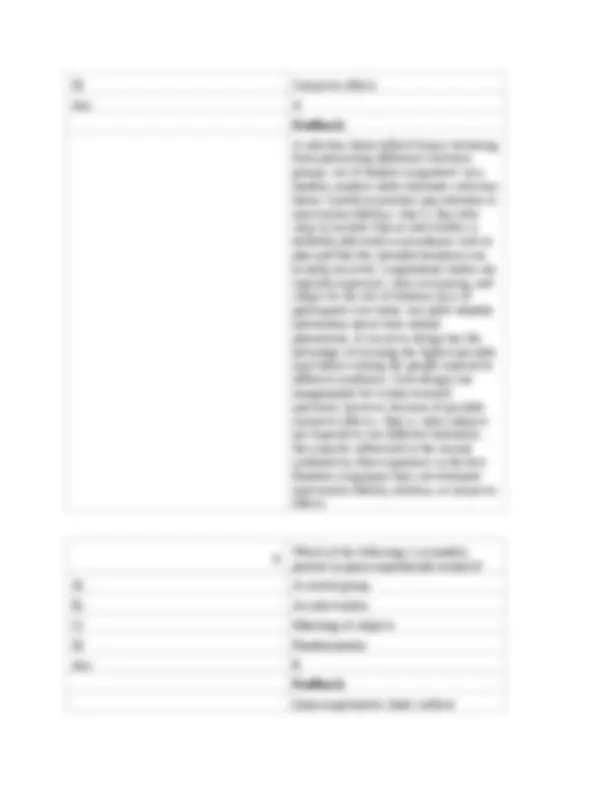
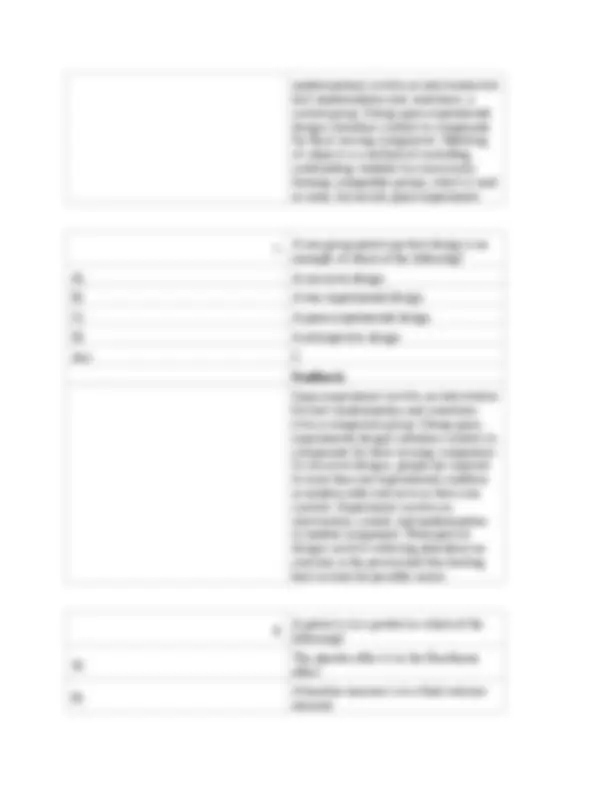
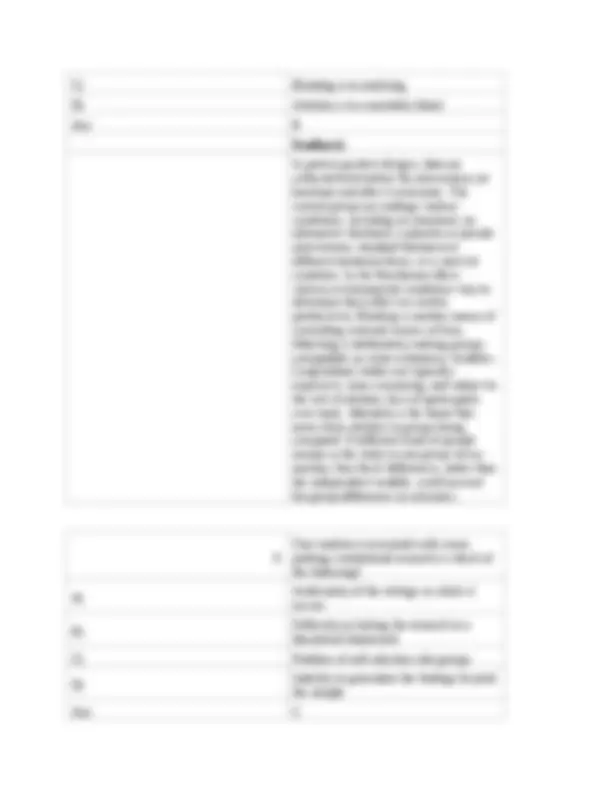
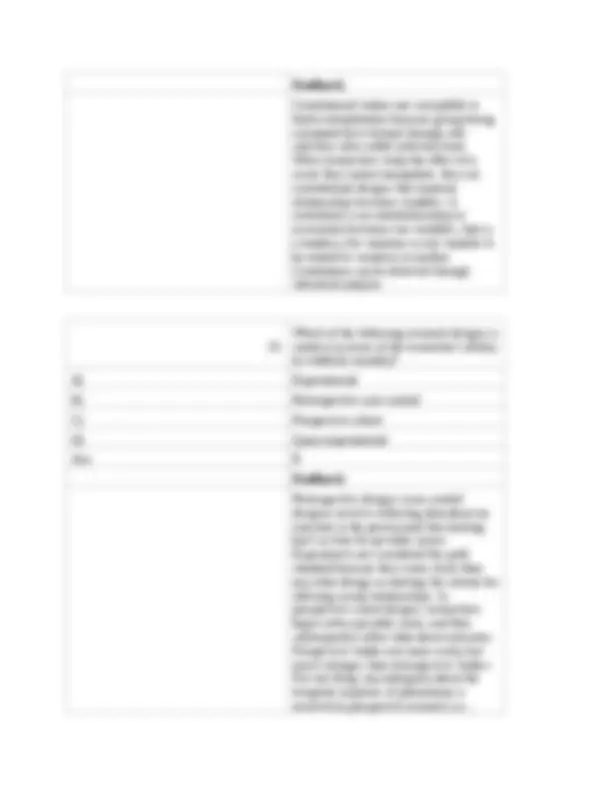
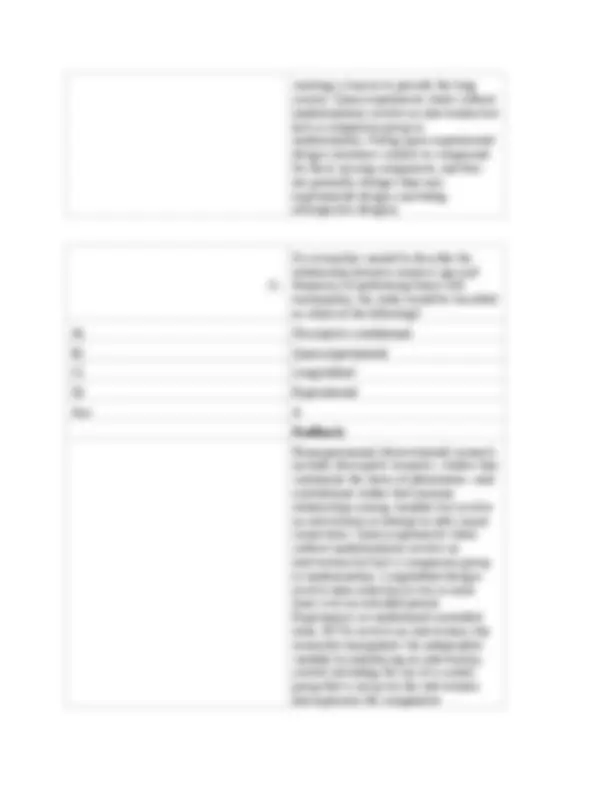
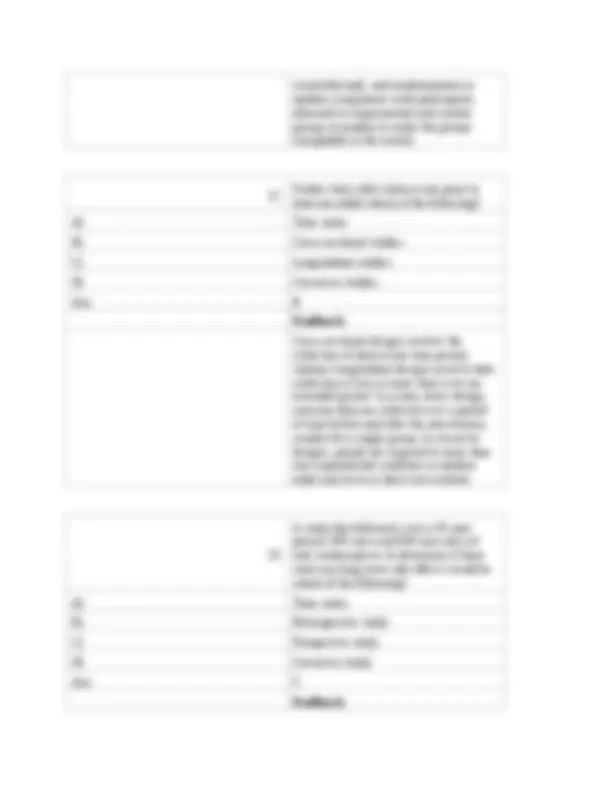
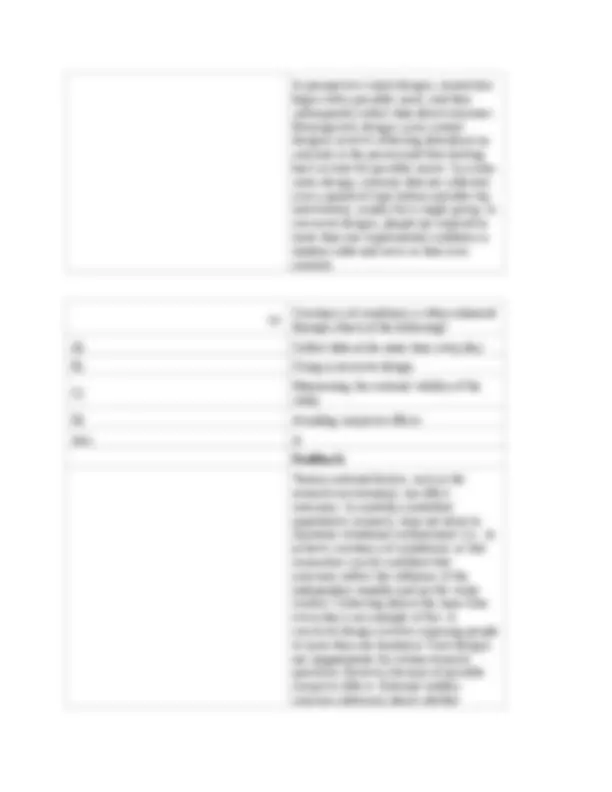
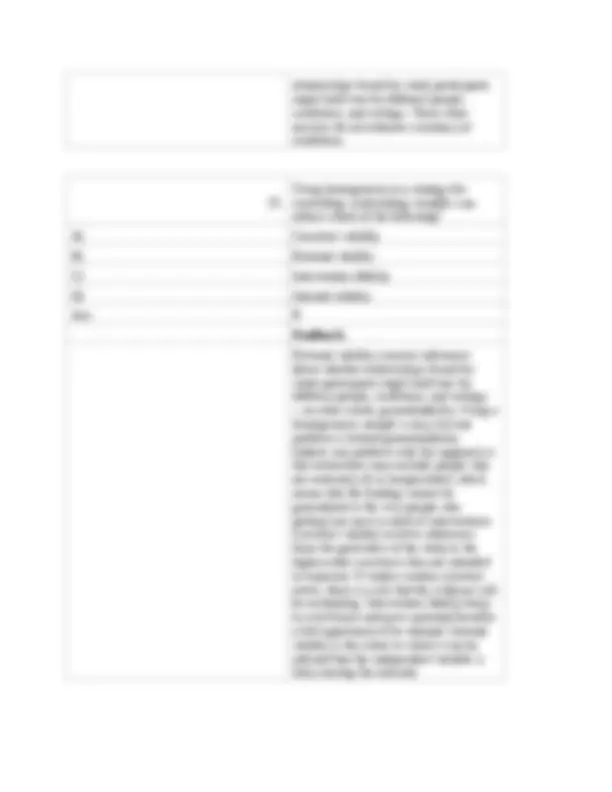
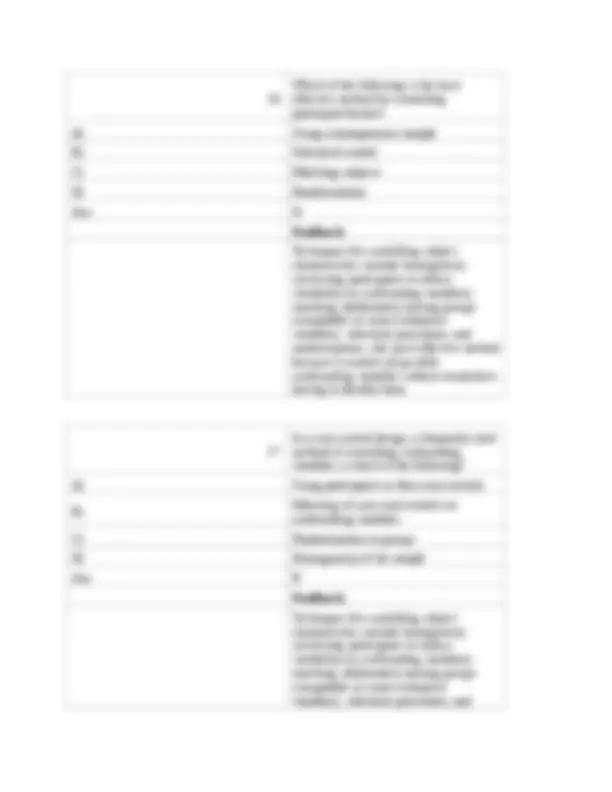
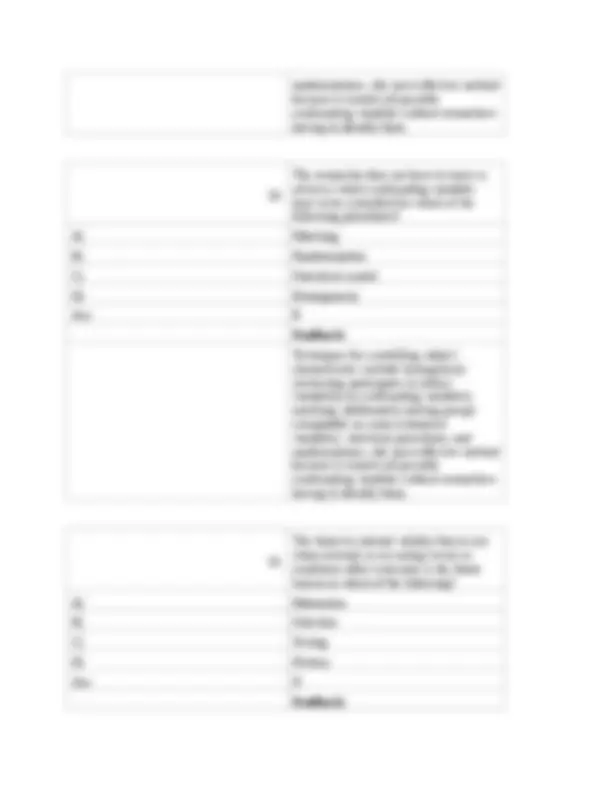
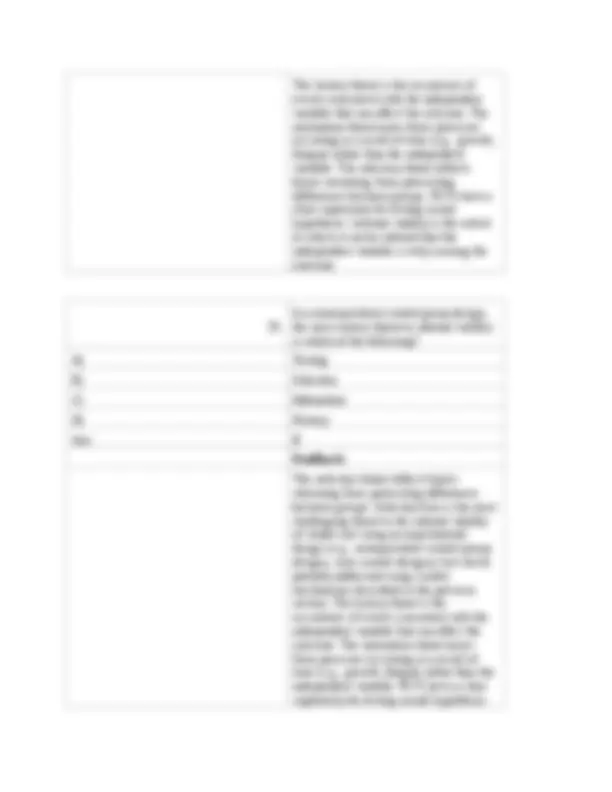
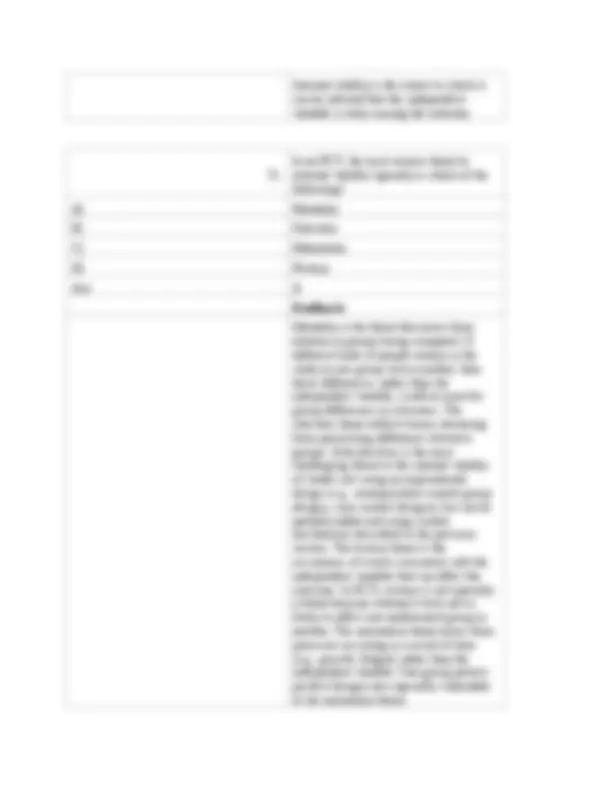
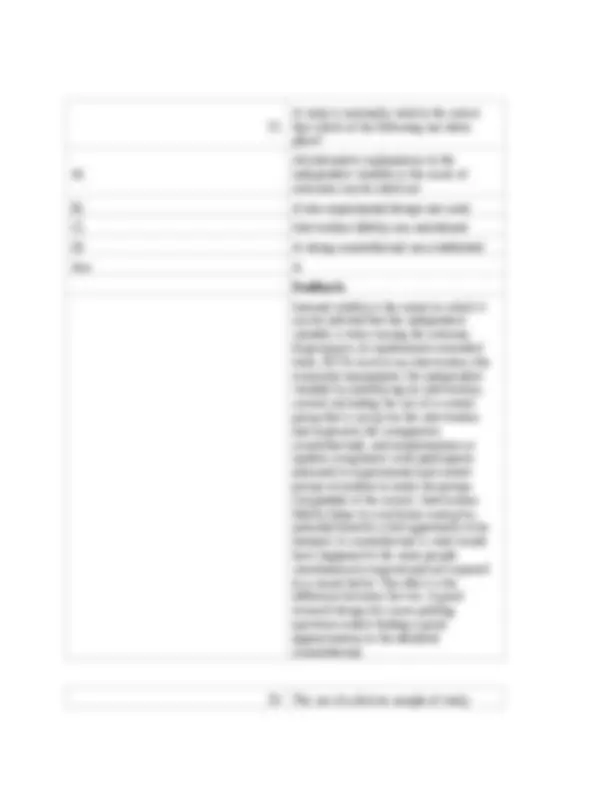
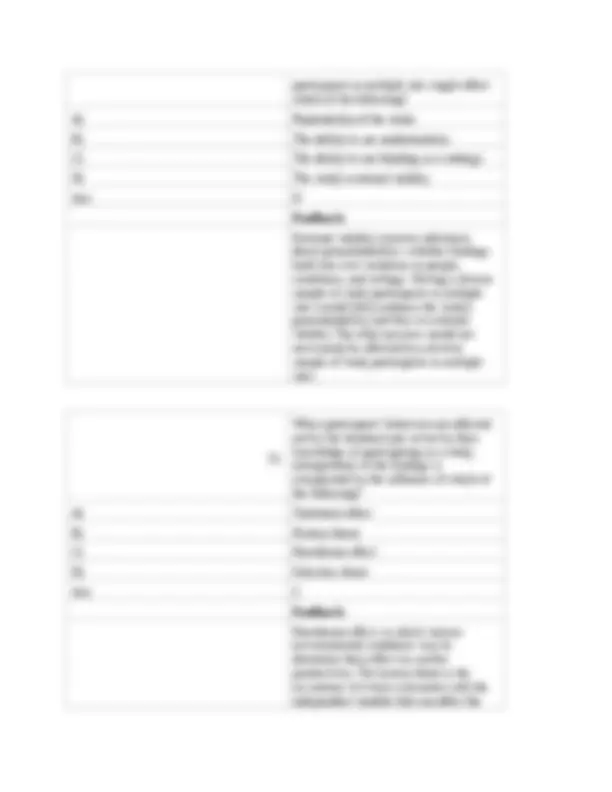
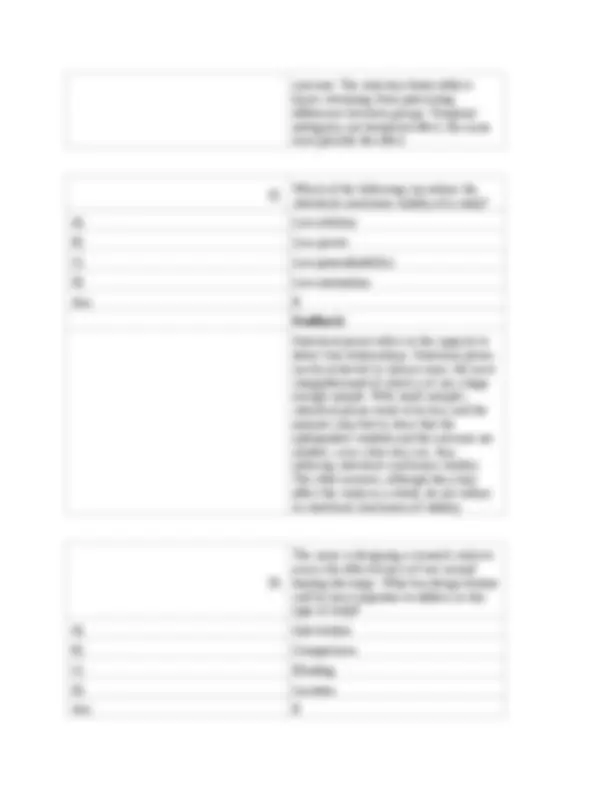
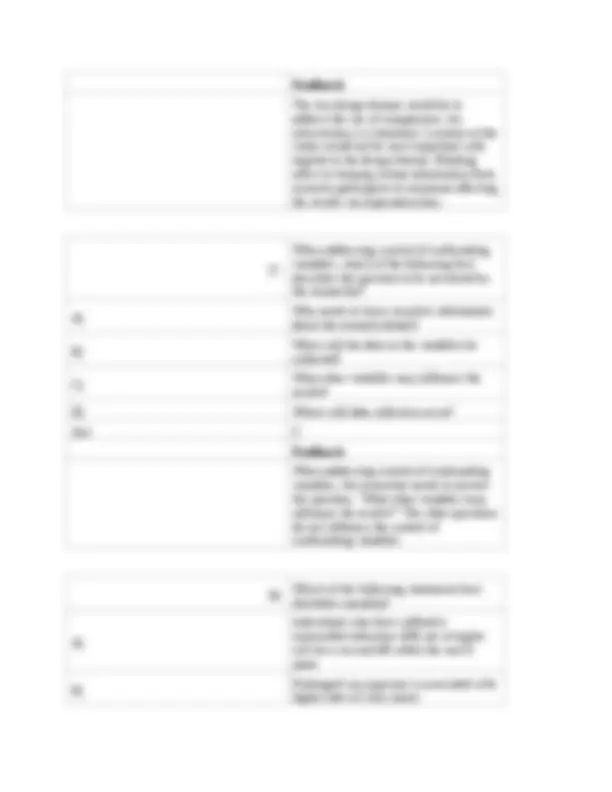
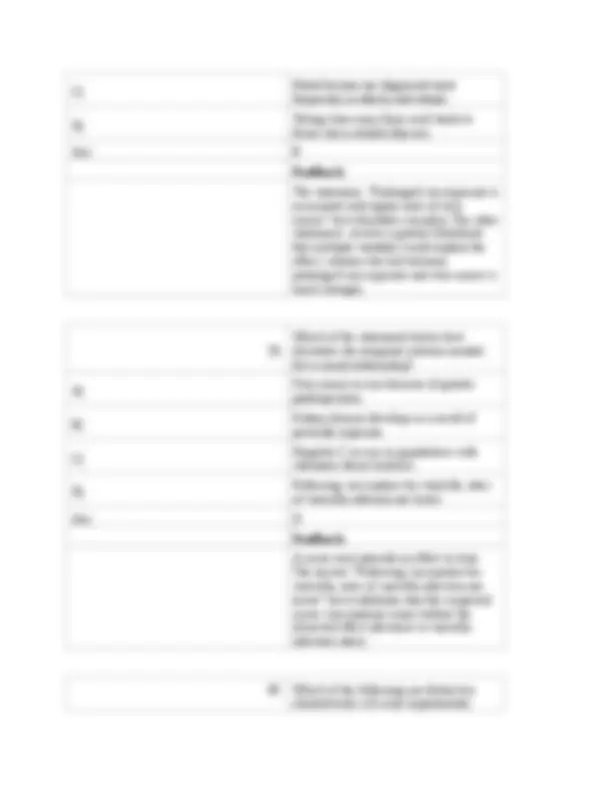
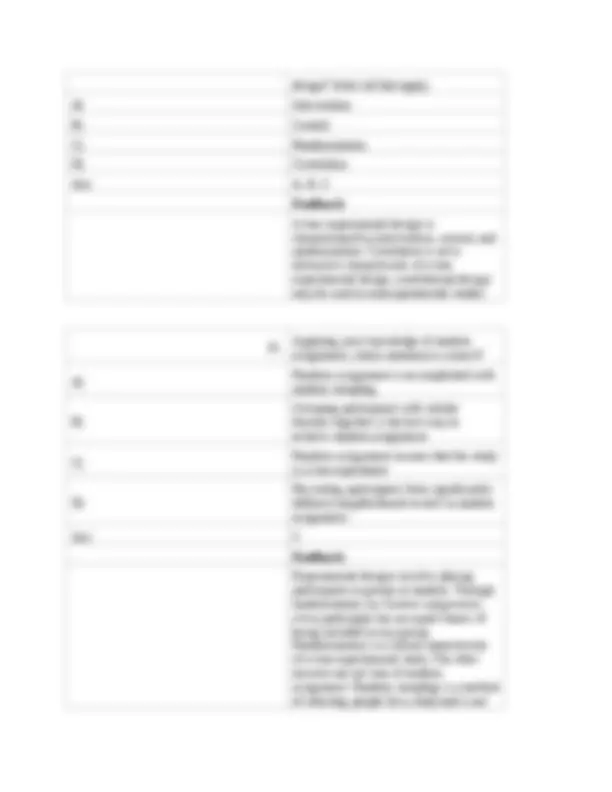
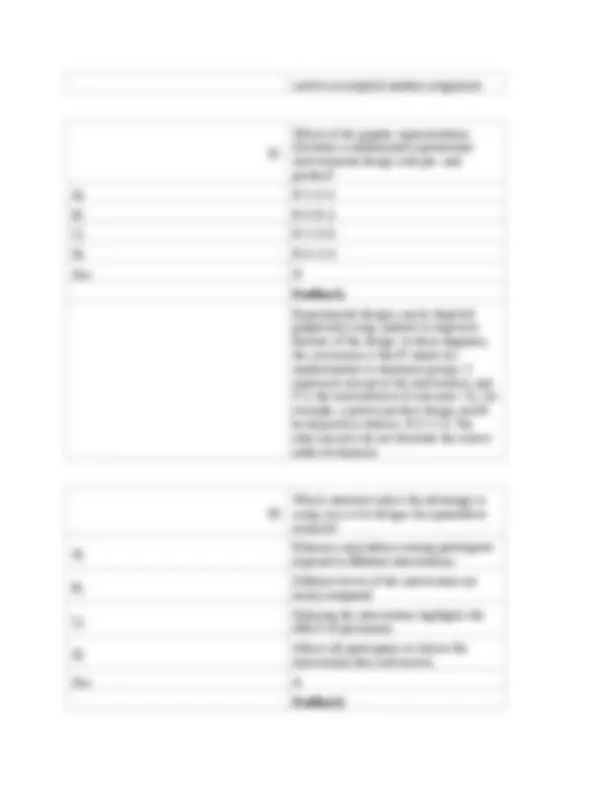
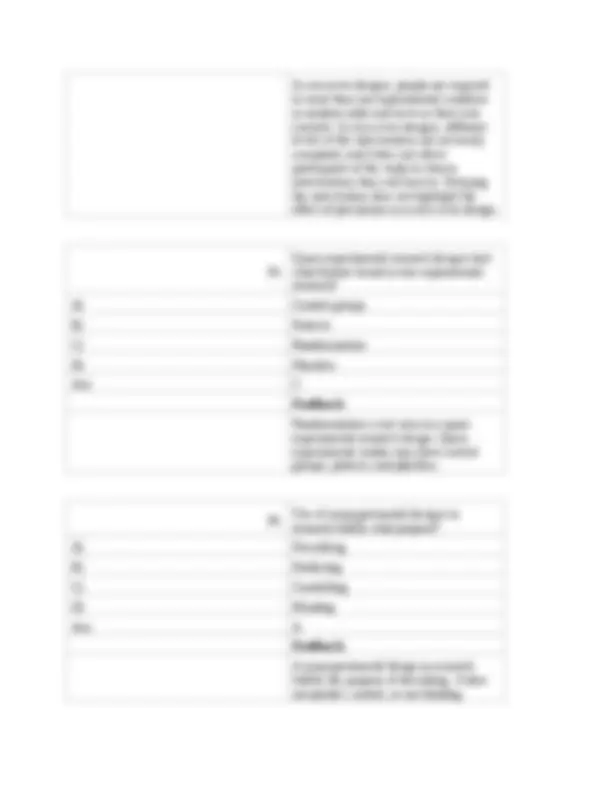
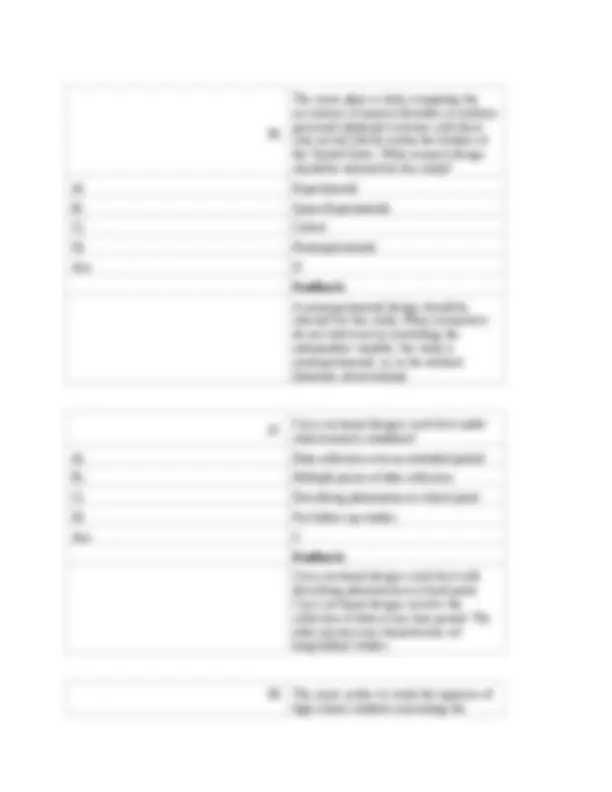
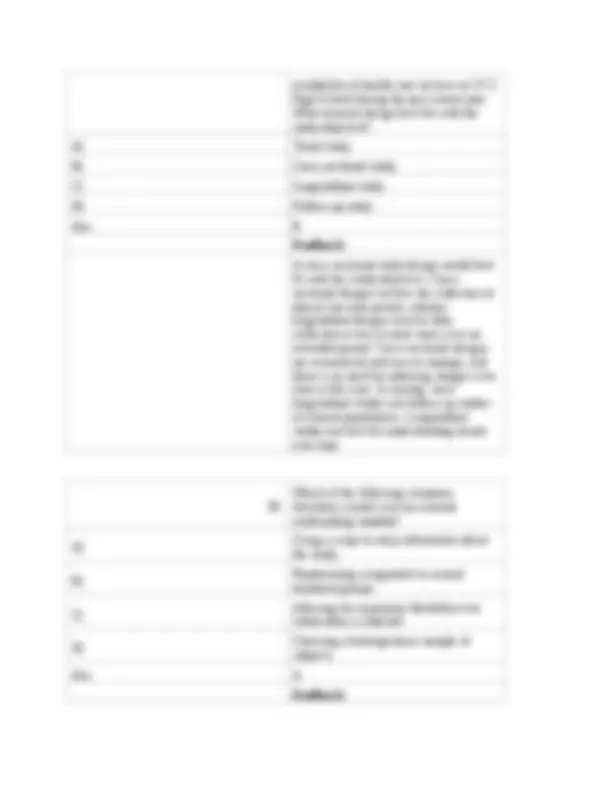
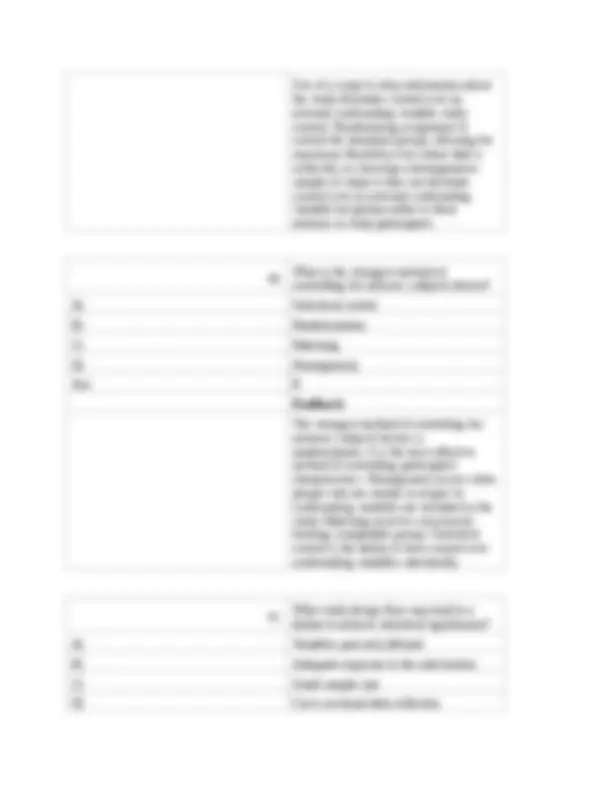
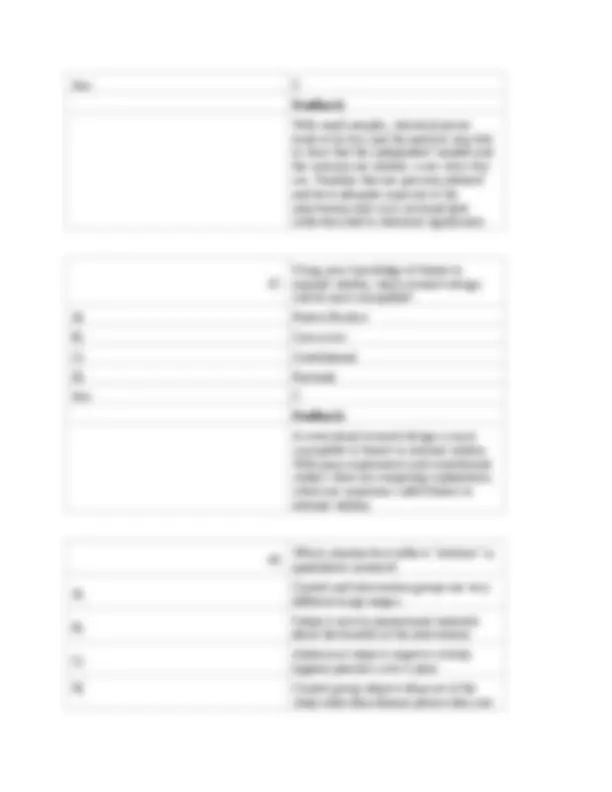
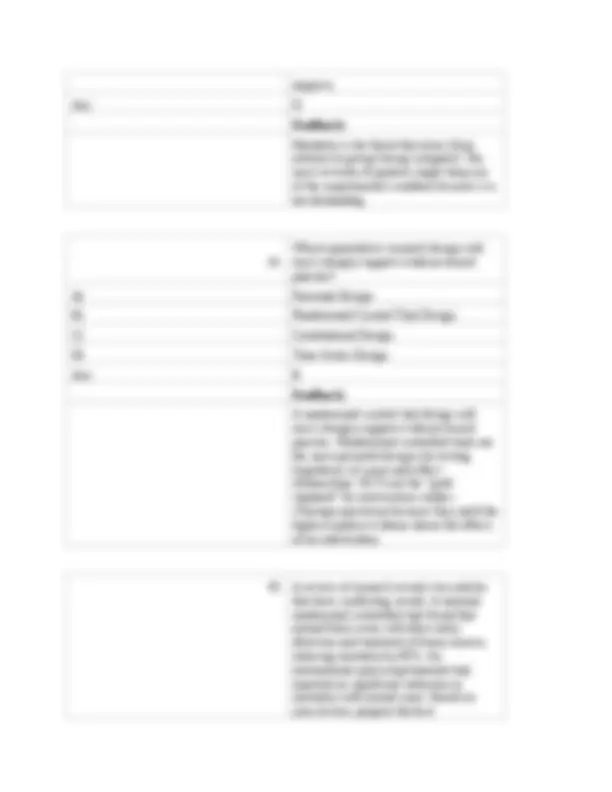
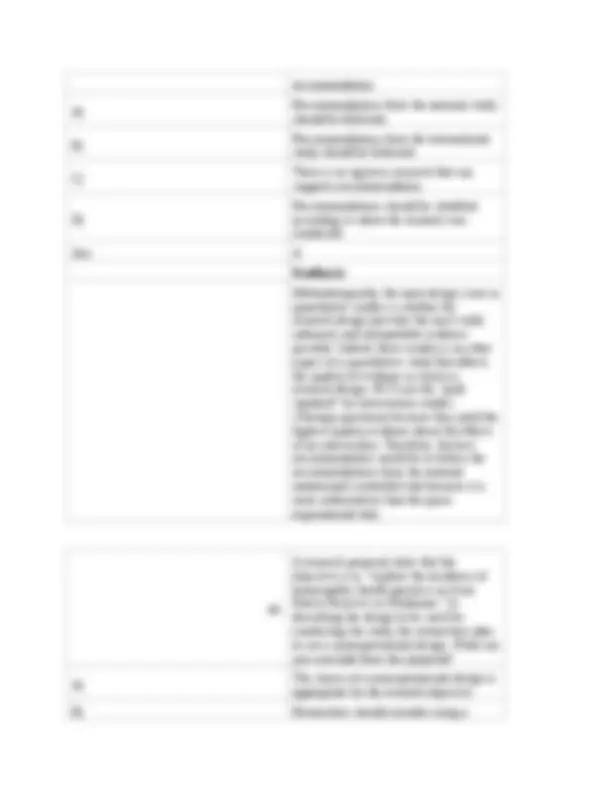
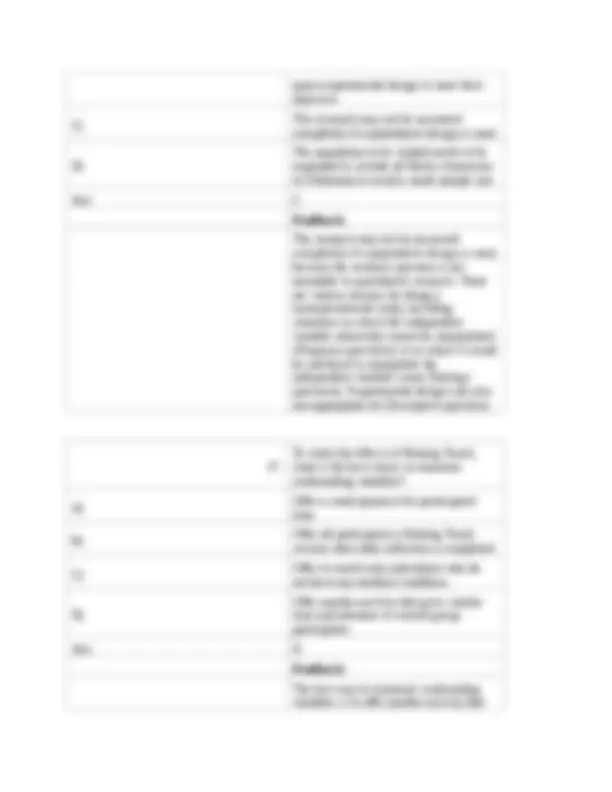
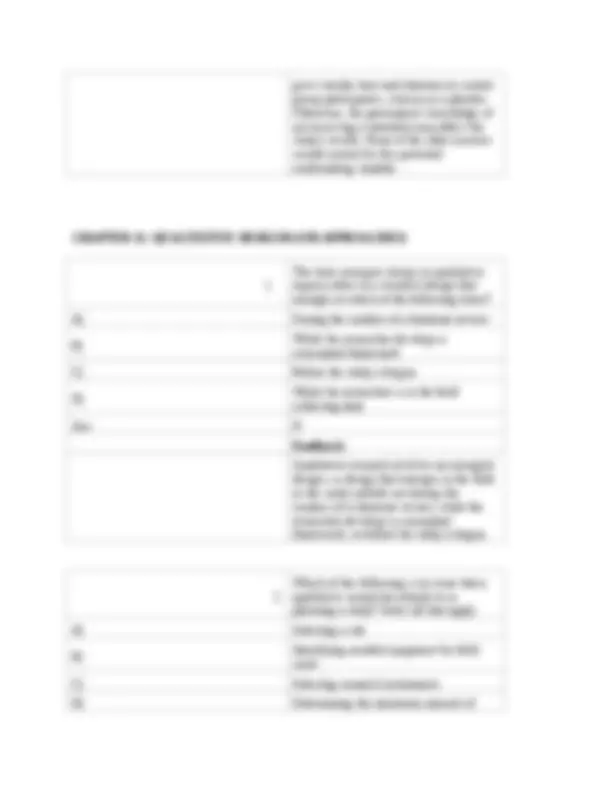
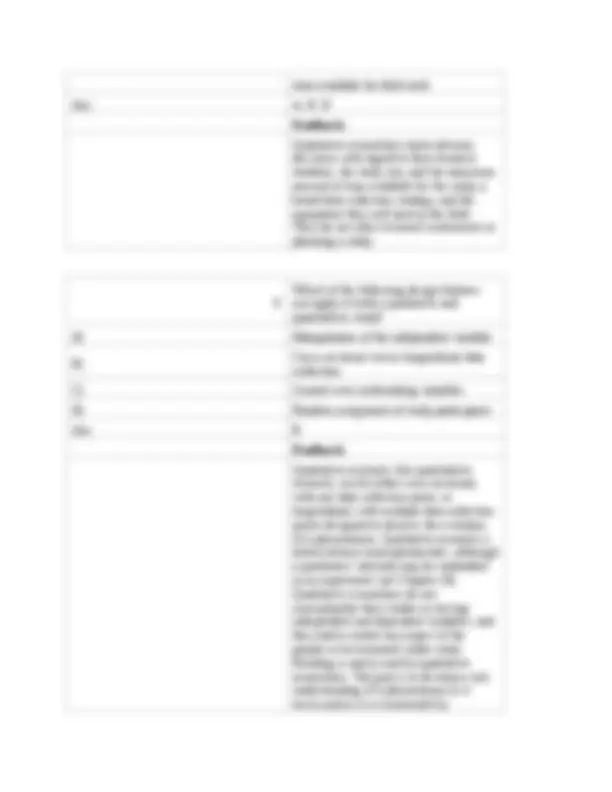

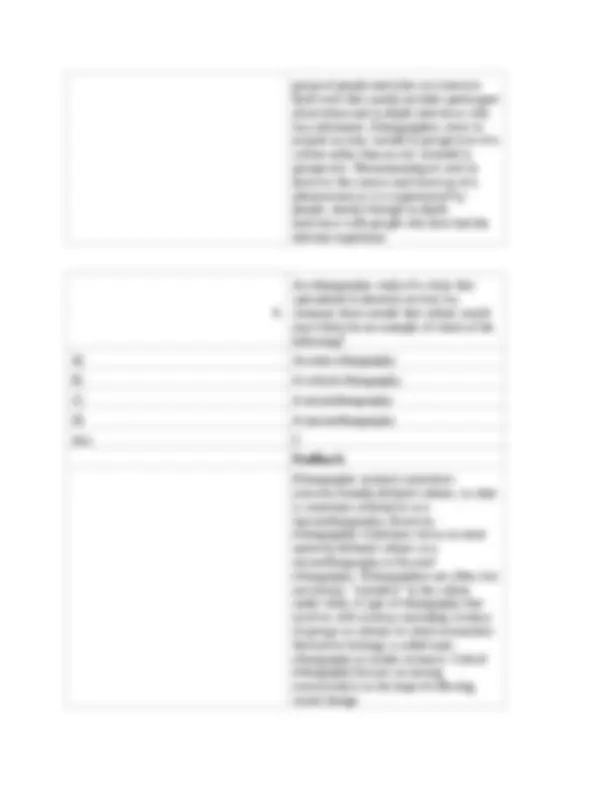
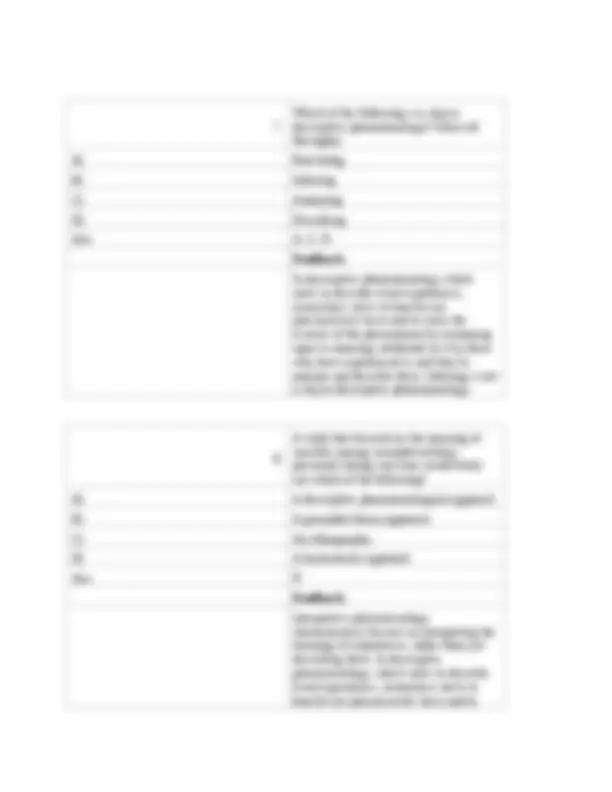
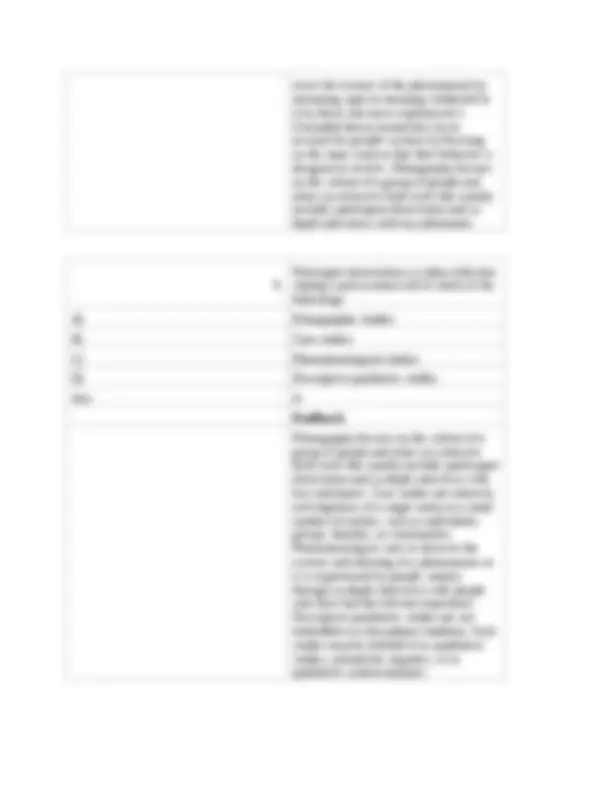
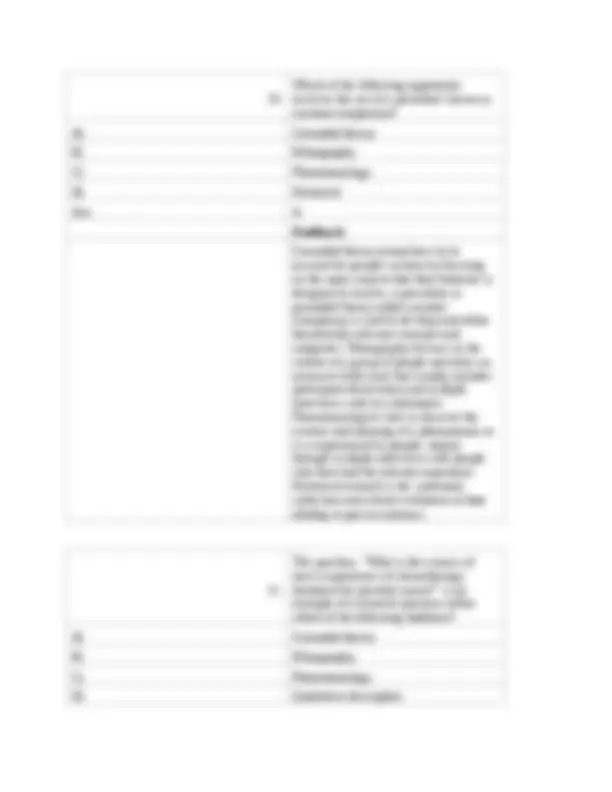
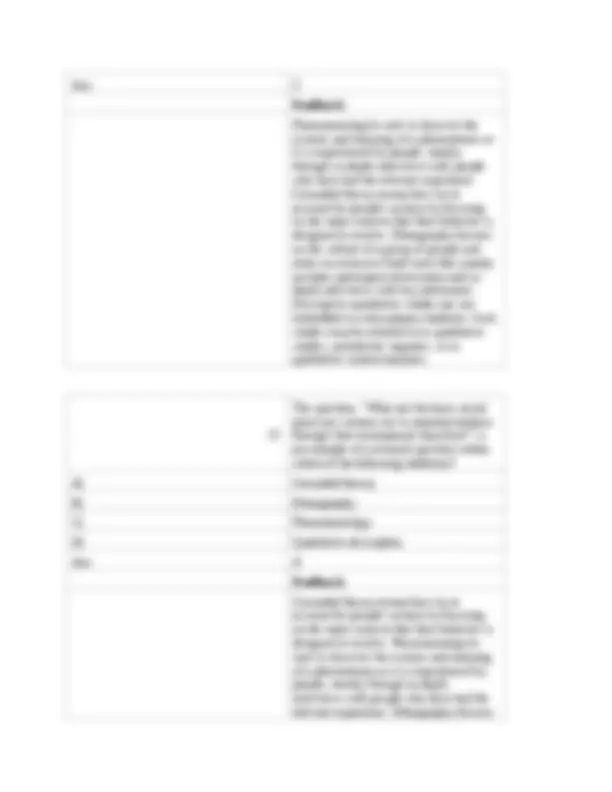
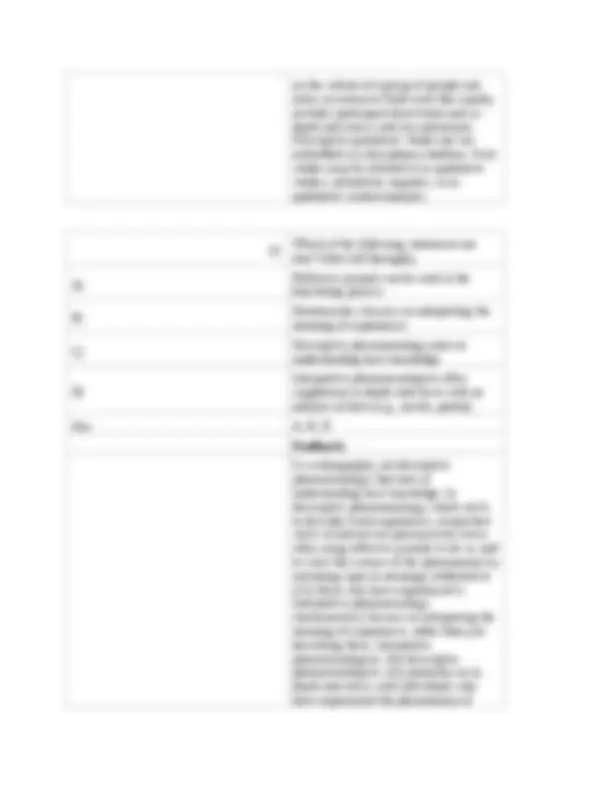
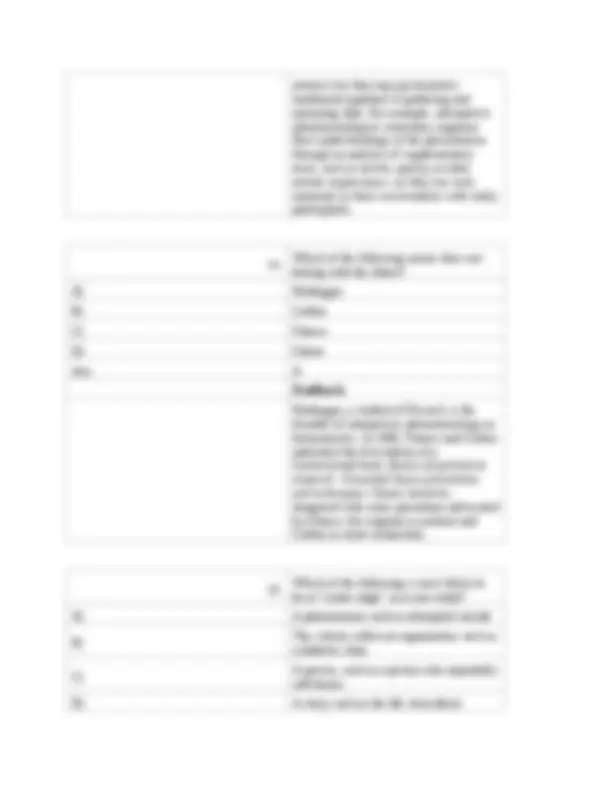

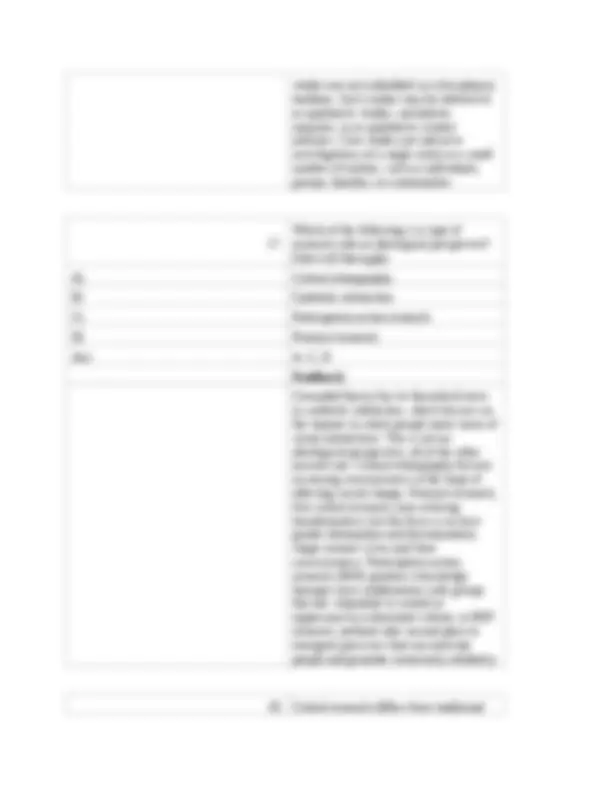
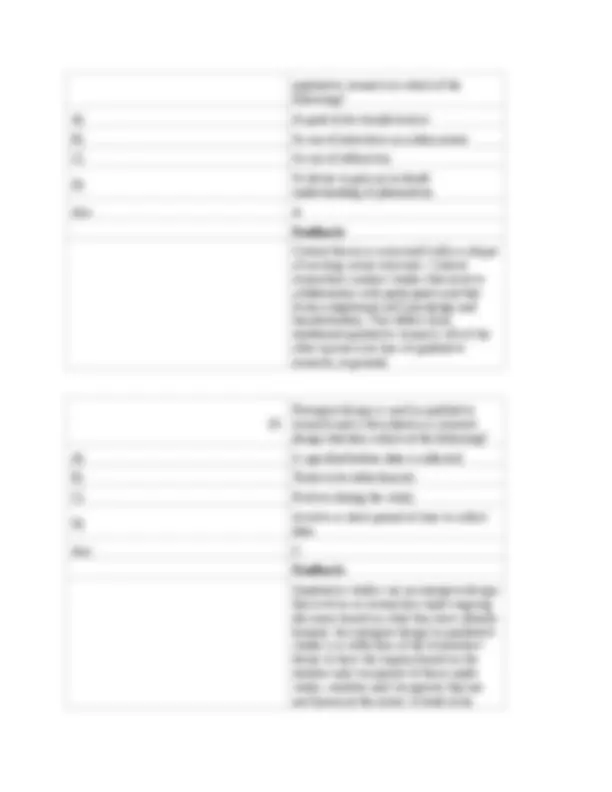
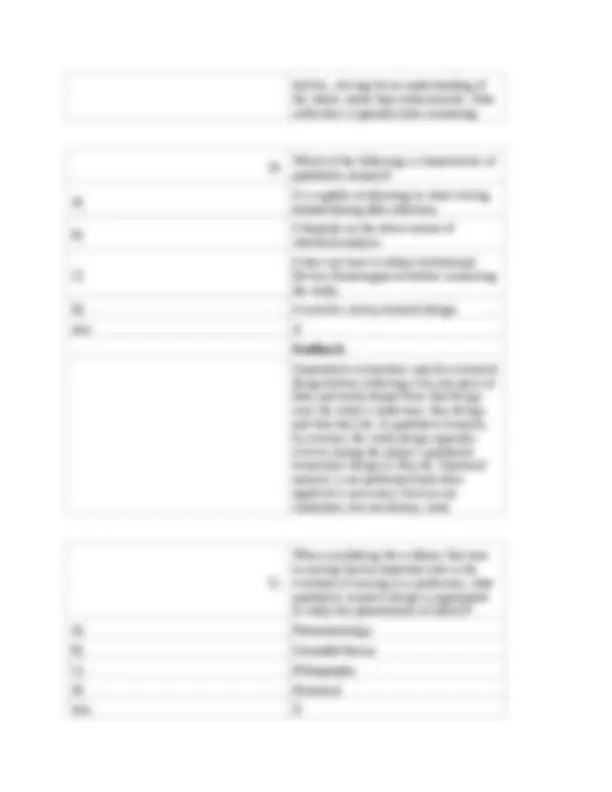
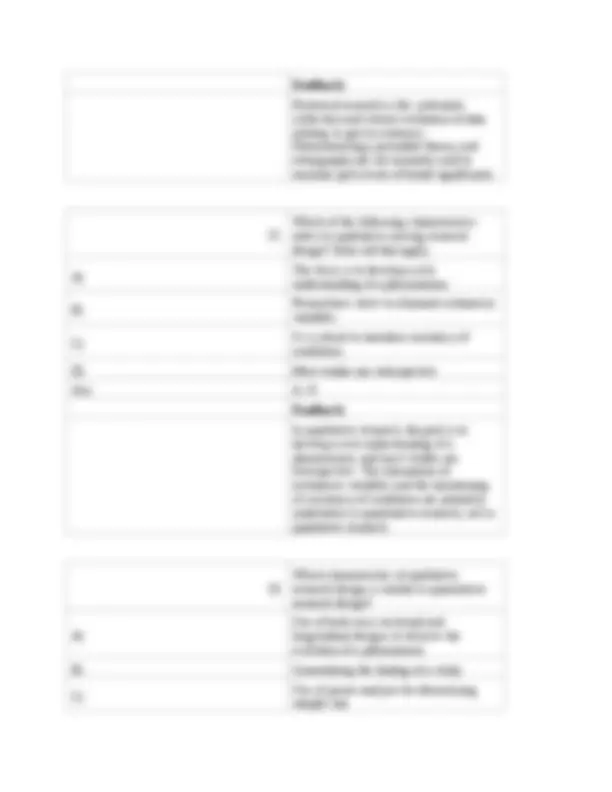

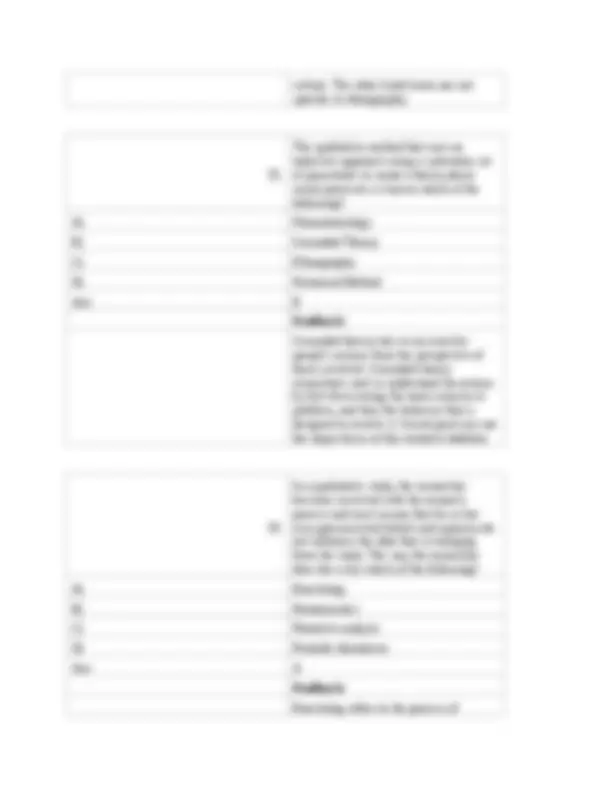
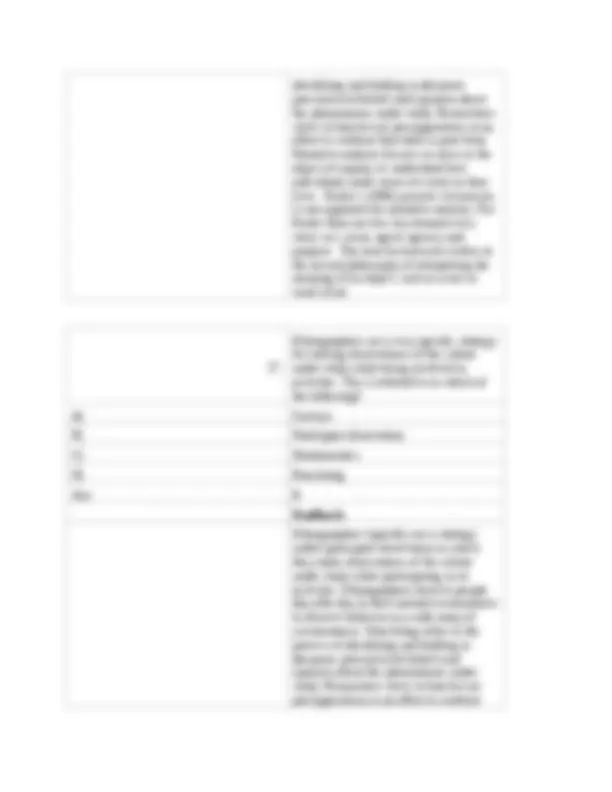
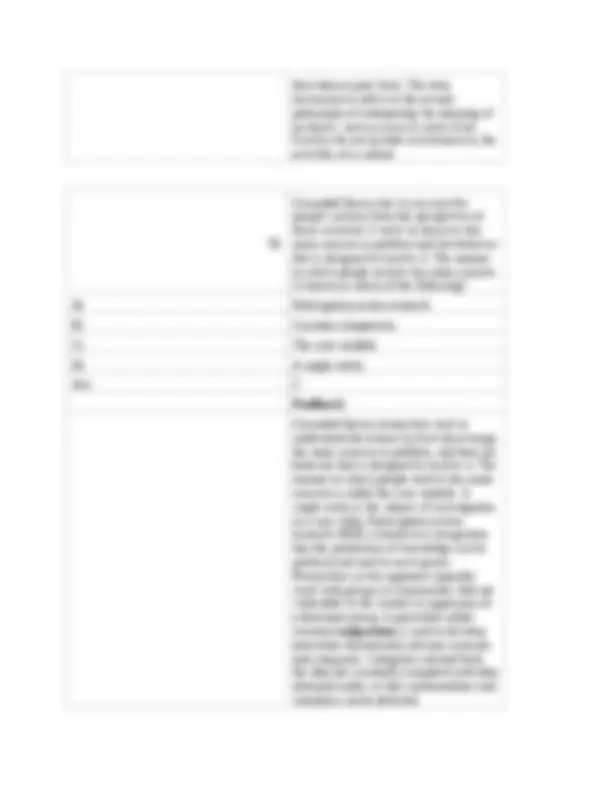
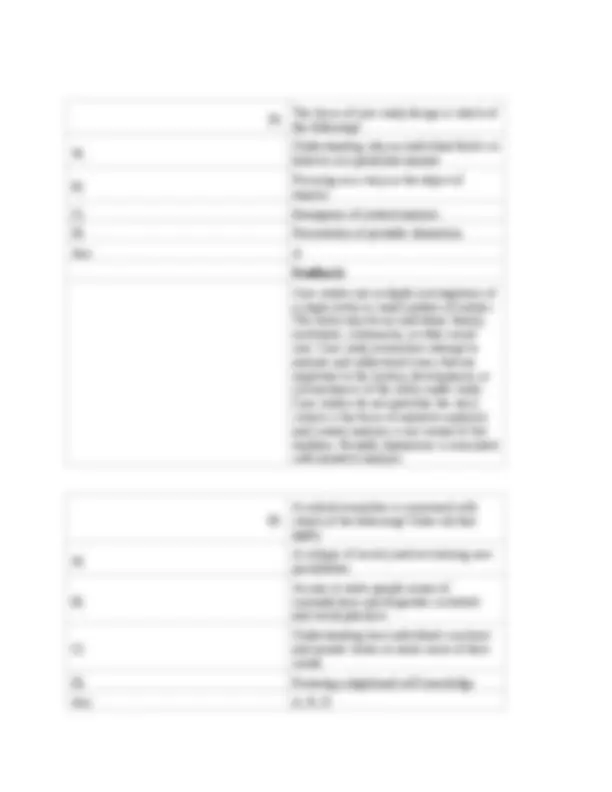
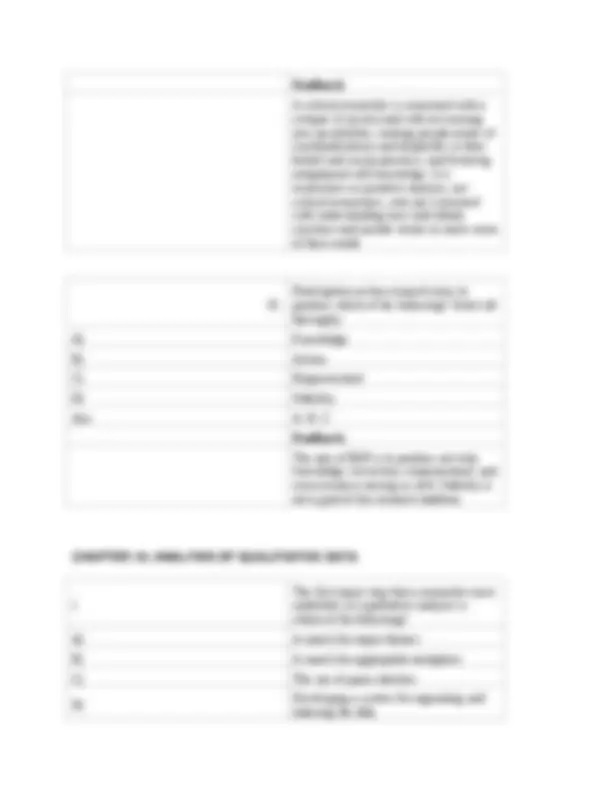
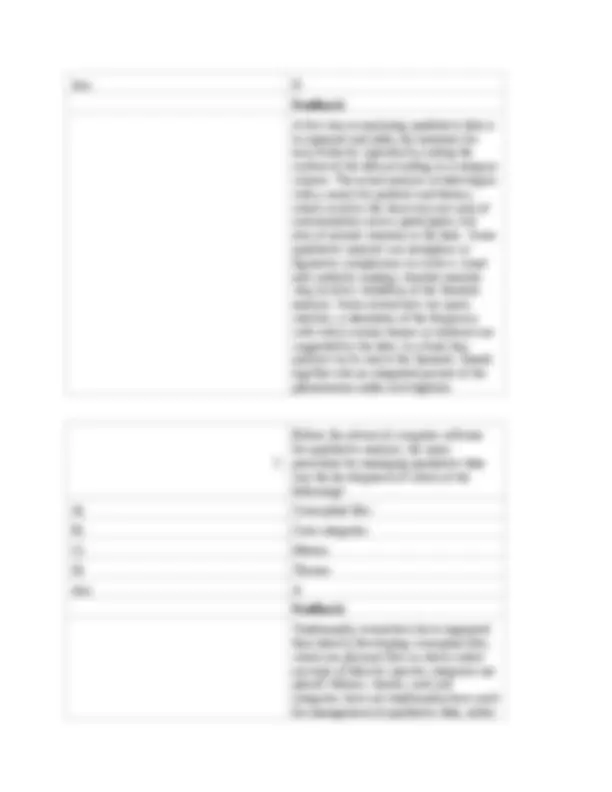
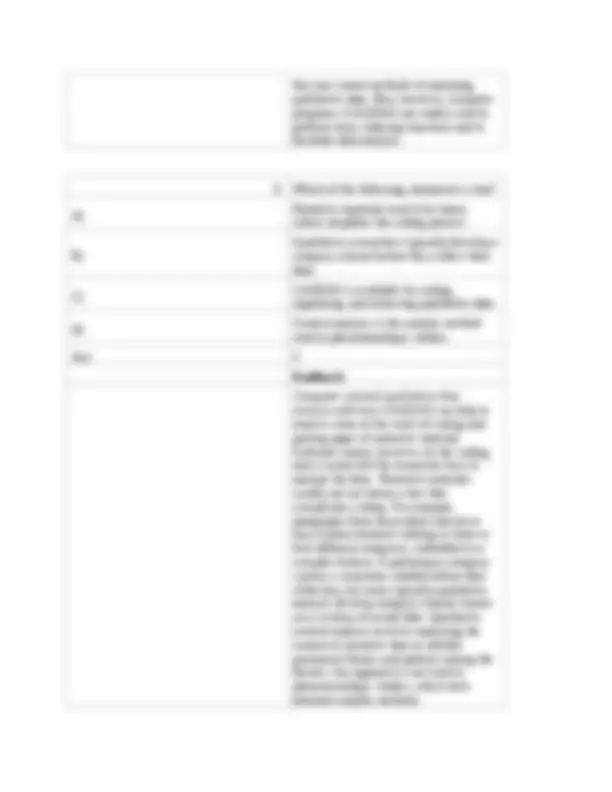
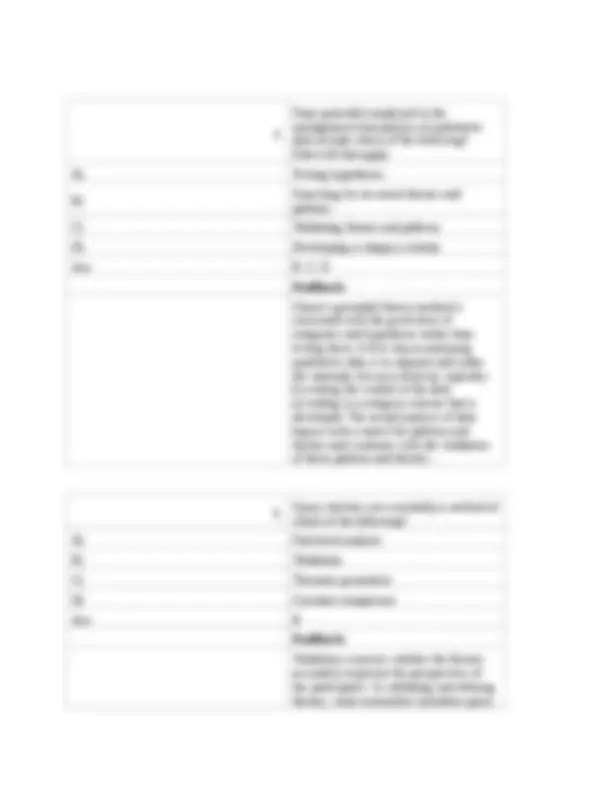
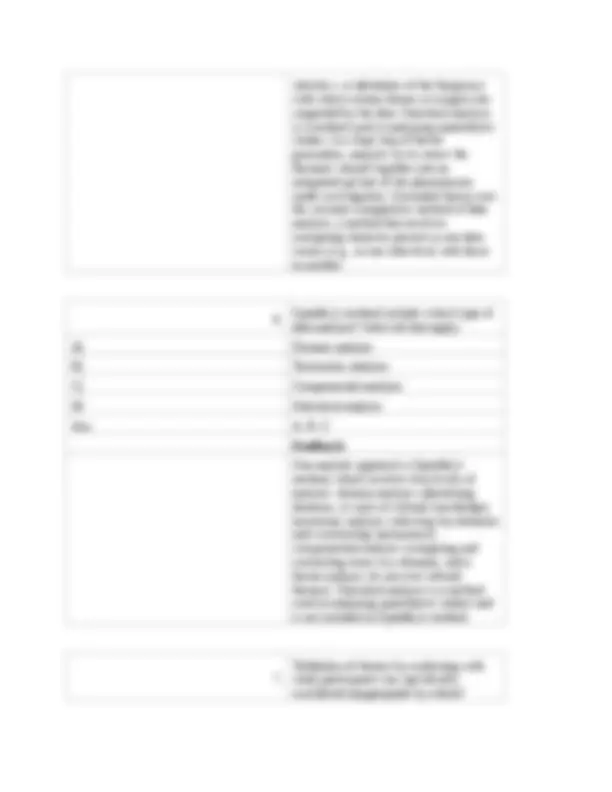
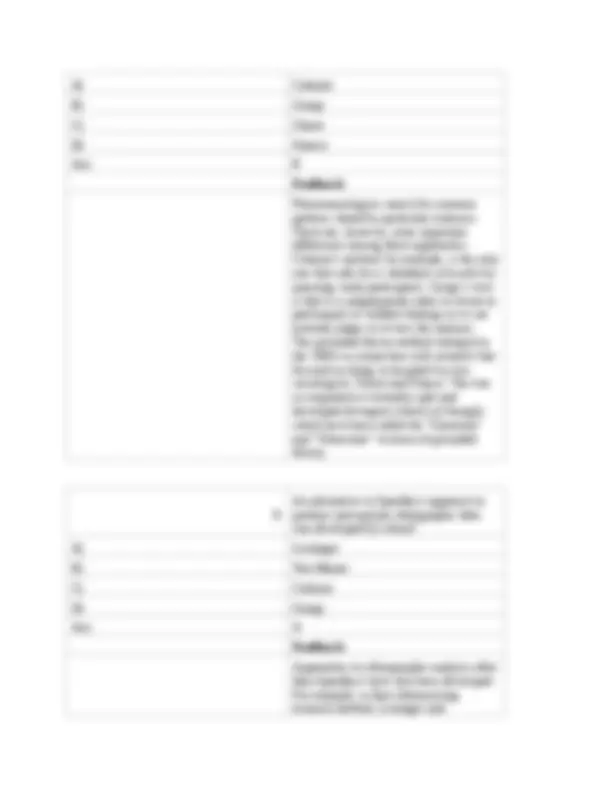
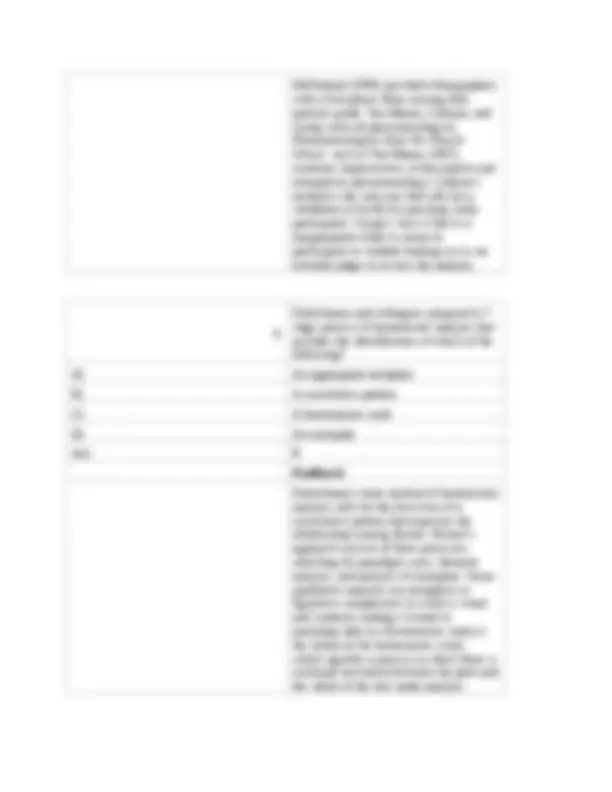
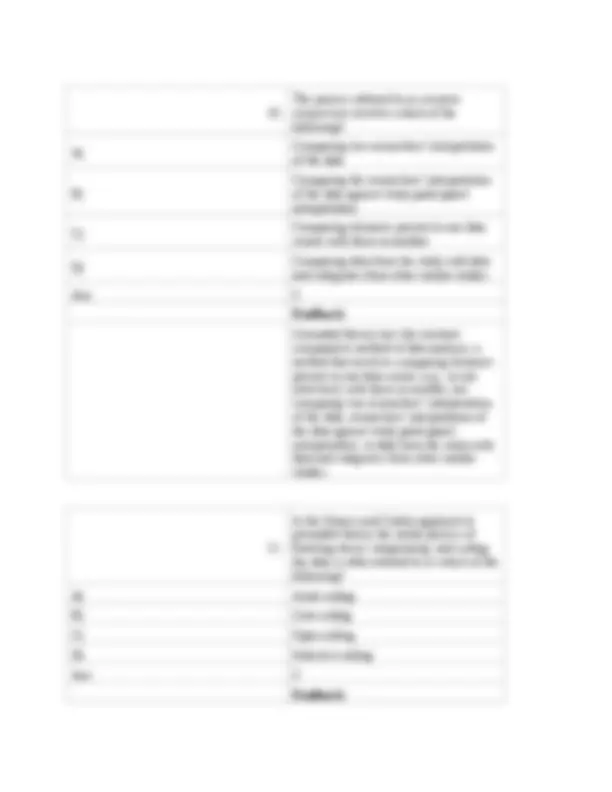
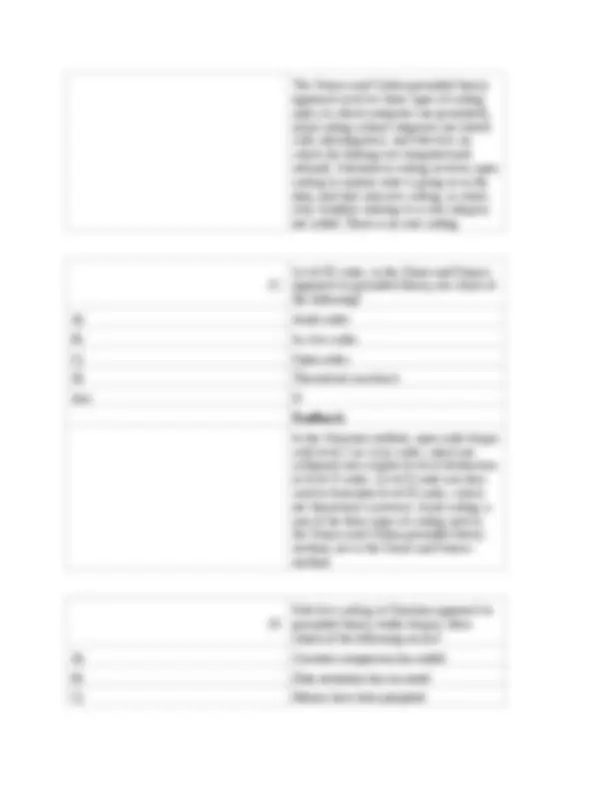
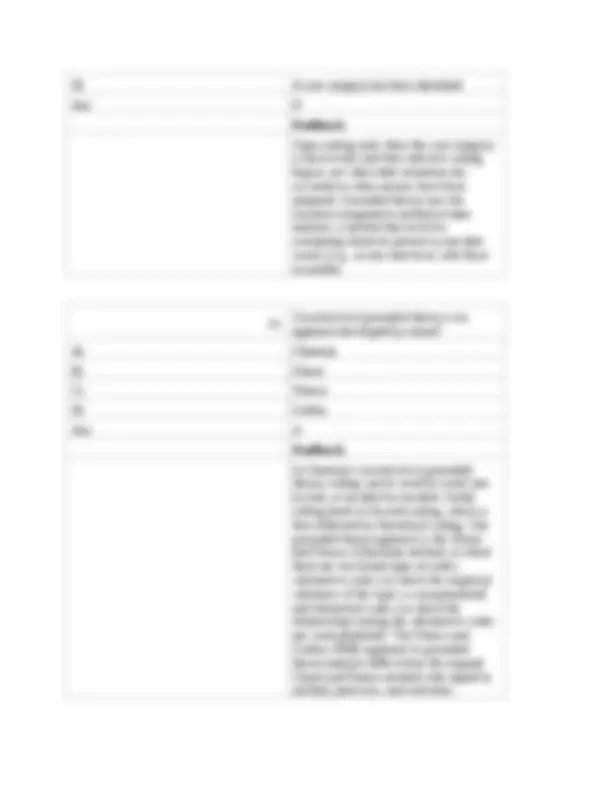
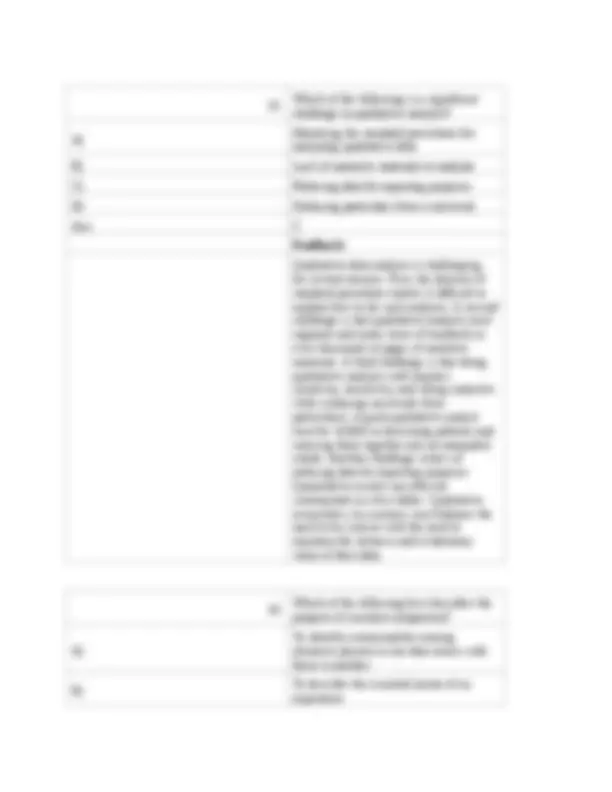
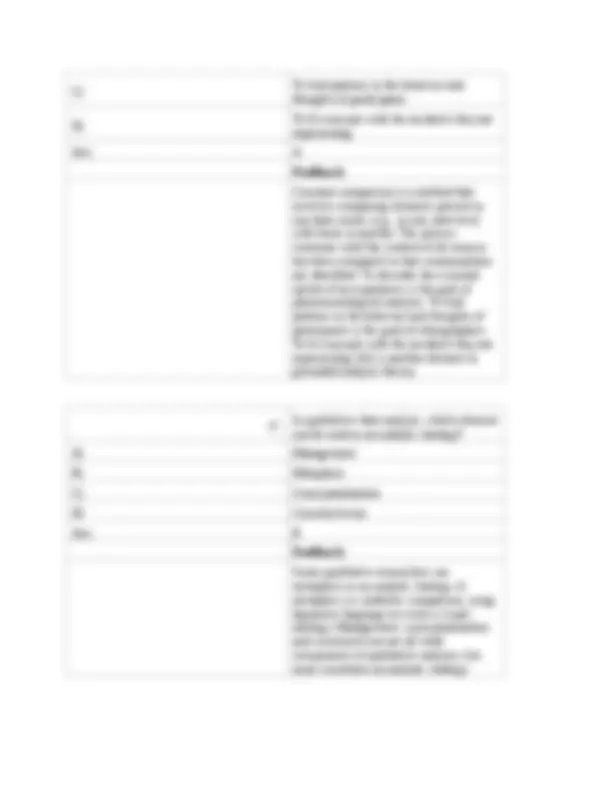
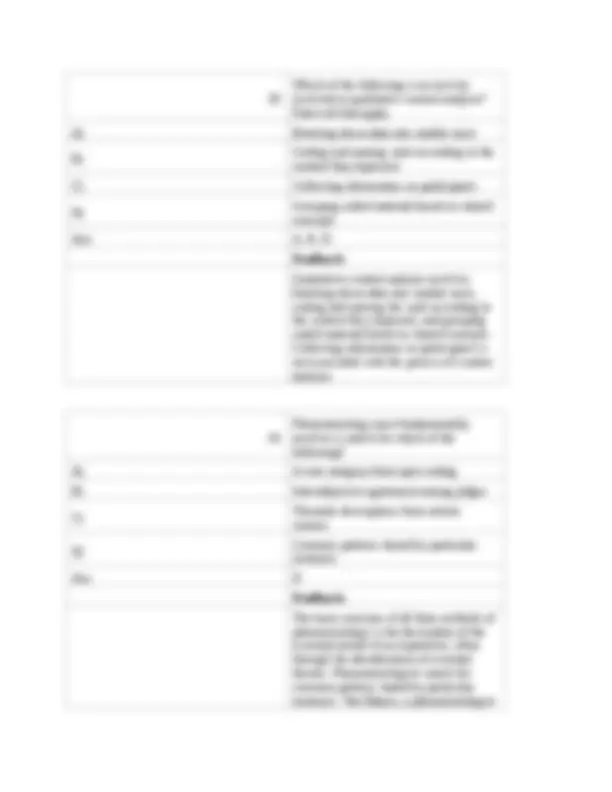


Study with the several resources on Docsity

Earn points by helping other students or get them with a premium plan


Prepare for your exams
Study with the several resources on Docsity

Earn points to download
Earn points by helping other students or get them with a premium plan
Community
Ask the community for help and clear up your study doubts
Discover the best universities in your country according to Docsity users
Free resources
Download our free guides on studying techniques, anxiety management strategies, and thesis advice from Docsity tutors
Various sampling methods used in quantitative research studies. It covers topics such as the weakest type of sample for quantitative studies, the advantages and disadvantages of different sampling techniques, and the impact of sample size on research outcomes. Insights into probability and non-probability sampling approaches, highlighting the key features and appropriate applications of each method. By analyzing this document, readers can gain a deeper understanding of the sampling considerations that are crucial for designing robust and reliable quantitative research studies in fields like nursing, healthcare, and social sciences.
Typology: Exams
1 / 125

This page cannot be seen from the preview
Don't miss anything!





























































































CHAPTER 12: Sampling and data collection in qualitative studies
Sampling may be defined as which of the following? A) Selection of an accessible population for a study B) Selection of a subset of a population to represent the entire population C) Assignment of study participants to treatment groups D) Technique for ensuring that every element in the population has an equal chance of being included in the study Ans: B Feedback: Sampling is the process of selecting elements from a population, which is an entire aggregate of cases. An element is the basic unit of a population—usually humans in nursing research. Eligibility criteria (including both inclusion criteria and exclusion criteria) are used to define population characteristics. Researchers usually sample from an accessible population; a broader target population is the group to which they would like to generalize their results. A key criterion in assessing a sample in a quantitative study is its representativeness —the extent to which the sample is similar to the population and avoids bias.
Bias in a sample for a quantitative study refers to which of the following? A) Lack of heterogeneity in the population on the attribute of interest B) Sample selection using nonprobability- type sampling methods C) The margin of error in the data obtained from samples
Systematic over- or underrepresentation of a key attribute vis-a-vis the population Ans: D Feedback: Sampling bias is the systematic overrepresentation or underrepresentation of some segment of the population. Nonprobability sampling (in which elements are selected by nonrandom methods) includes convenience, quota, consecutive, and purposive sampling. A key criterion in assessing a sample in a quantitative study is its representativeness —the extent to which the sample is similar to the population and avoids bias.
Strata are incorporated into the design of which of the following sampling approaches? A) Systematic B) Purposive C) Quota D) Consecutive Ans: C Feedback: Quota sampling divides the population into homogeneous strata (subpopulations) to ensure representation of the subgroups in the sample; within each stratum, people are sampled by convenience. Consecutive sampling involves taking all of the people from an accessible population who meet the eligibility criteria over a specific time interval, or for a specified sample size. In purposive sampling, participants are hand- picked to be included in the sample based on the researcher's knowledge about the population. Systematic sampling is the selection of every k th case from a list.
specified sample size. Convenience sampling uses the most readily available or convenient group of people. In purposive sampling, participants are hand-picked to be included in the sample based on the researcher's knowledge about the population. Quota sampling divides the population into homogeneous strata (subpopulations) to ensure representation of the subgroups in the sample; within each stratum, people are sampled by convenience.
Which of the following types of sample is considered to be the weakest for quantitative studies? A) Convenience B) Quota C) Purposive D) Systematic Ans: A Feedback: Convenience sampling uses the most readily available or convenient group of people. The problem with convenience sampling is that people who are readily available might be atypical of the population, and so the price of convenience is the risk of bias. Convenience sampling is the weakest form of sampling, but it is also the most commonly used sampling method in many disciplines. In purposive sampling, participants are hand-picked to be included in the sample based on the researcher's knowledge about the population. Quota sampling divides the population into homogeneous strata (subpopulations) to ensure representation of the subgroups in the sample; within
each stratum, people are sampled by convenience. Systematic sampling is the selection of every k th case from a list.
A researcher used a systematic sampling plan. The sample size was 200. The sampling interval was 250. The first element drawn was 196. The second element would be: A) 396 B) 45 C) 446 D) 646 Ans: C Feedback: By dividing the population size by the desired sample size, the researcher establishes the sampling interval, which is the standard distance between the selected elements: 196 (first element) + 250 (sample interval) = 446 (second element). 396, 450, and 646 are incorrect responses.
Which of the following is the most widely used data collection method by nurse researchers? A) Records B) Self-reports C) Observation D) Biophysiologic measures Ans: B Feedback: Data collection methods vary in terms of structure, quantifiability, and objectivity. The three principal data collection methods for nurse researchers are self- report, observations, and biophysiologic
C) The quality of the data tends to be higher D) They require less training of research personnel Ans: C Feedback: Interviews are usually preferable to questionnaires because the quality of the data tends to be higher. Researchers using structured self-reports must decide whether to use interviews or self- administered questionnaires. Questionnaires are less costly than interviews and offer the possibility of anonymity, but interviews yield higher response rates, are suitable for a wider variety of people, and provide richer data than questionnaires.
Questionnaires have the advantage of which of the following? A) Offering the possibility of anonymity B) Having high response rates C) Reducing the possibility of response set biases D) Being suitable for all types of study participants Ans: A Feedback: Questionnaires are less costly than interviews and offer the possibility of anonymity, but interviews yield higher response rates (which reduce the risk for bias), are suitable for a wider variety of people, and provide richer data than questionnaires. Interviews are usually preferable to questionnaires because the quality of the data tends to be higher. Researchers using structured self-reports must decide whether to use interviews or self-administered questionnaires.
On a five-point Likert scale, a person who strongly agreed with a statement would be scored as which of the following? A) 1 B) 3 C) 5 D) Cannot be determined Ans: D Feedback: Likert scales (or summated rating scales) present respondents with a series of items worded favorably or unfavorably toward a phenomenon; responses indicating level of agreement or disagreement with each statement are scored and summed into a composite score. The term needs to be indicated for each number in order to determine which number represents strongly agree or disagree.
On a 20-item Likert scale with five response categories, the range of possible scores is which of the following? A) 0 to 100 B) 20 to 80 C) 20 to 100 D) 0 to 50 Ans: C Feedback: Likert scales (or summated rating scales) present respondents with a series of items worded favorably or unfavorably toward a phenomenon; responses indicating level of agreement or disagreement with each statement are scored and summed into a composite score. 20 items x a score of 1
A) Mailed anonymous questionnaires B) Face-to-face interviews C) Telephone interviews D) All options are equally susceptible Ans: A Feedback: Social desirability response set bias—a tendency to misrepresent attitudes or traits by giving answers that are consistent with prevailing social views—would be least likely to be a problem with mailed anonymous questionnaires, as the anonymity would likely cause people to be less concerned about what others thought of their answers.
A person who marked “strongly agree” to all or most items on a Likert scale would best be described as which of the following? A) Socially desirable respondent B) Biased participant C) Nay-sayer D) Yea-sayer Ans: D Feedback: Acquiescence response set bias is a tendency to agree with statements regardless of their content; such responders are known as “yea-sayers .” People who have the opposite tendency— to disagree with statements independently of the question content—are known as nay-sayers and are much less common. Social desirability response set bias is a tendency to misrepresent attitudes or traits by giving answers that are consistent with prevailing social views. A yea-sayer is a type of biased participant.
When an observer is not concealed, the findings may be biased because of which of the following? A) Reactivity B) Ethical problems C) Lack of mobility D) Acquiescence response set bias Ans: A Feedback: Researchers do not always tell people they are being observed, because awareness of being observed may cause people to behave atypically. A behavioral distortion due to the known presence of an observer is called reactivity. It is not an ethical problem or lack of mobility. Acquiescence response set bias is a tendency to agree with statements regardless of their content by some people (yea-sayers). The opposite tendency—to disagree with statements independently of the question content—is less common.
Which of the following are advantages of using biophysiologic measures in nursing studies? Select all that apply. A) They are relatively accurate and precise B) They effectively measure subjective experiences such as pain and fatigue C) They are objective, requiring minimal inference D) They are typically cost effective because they are available for clinical purposes Ans: A, C, D Feedback: Nurse researchers have used
Ans: A Feedback: Sampling involves selecting a portion of the population to represent the population. A low power to detect a difference in the outcomes of the two group results from a sample size that is too small. The other answers are not effects of having a sample size that is too small.
Which procedure describes a probability sampling method? A) Identification of community organizations and churches in an urban setting and recruiting participants B) Identification of individuals demonstrating the variable(s) of interest to the researcher and recruiting participants C) Identification of the accessible population and selecting study participants based upon the researcher's belief that the participant is representative of the accessible population D) Identification of a sampling frame for an accessible population, writing element names on paper, placing the written names in a bowl, and drawing a select number of names from the bowl Ans: D Feedback: Identification of a sampling frame for an accessible population, writing element names on paper, placing the written names in a bowl, and drawing a select number of names from the bowl describes a probability sampling method. This is because probability sampling involves random selection of elements from a population, which is achieved in this case by drawing names from a bowl. The other answers do not include random selection.
Which statement regarding sampling error and sampling bias is accurate? A) Sampling bias may be defined as the difference between data obtained from a simple random sample and the data that would be obtained if an entire population were measured. B) Sampling bias occurs by chance. C) Sampling error and sampling bias are synonymous. D) Sampling error may be contained in sample data even when the most careful random sampling procedure has been used to obtain the sample. Ans: D Feedback: Sampling error may be contained in sample data even when the most careful random sampling procedure has been used to obtain the sample. There is no guarantee of a representative sample, but random selection does guarantee that differences between the sample and the population (sampling error) are purely a function of chance rather than of sampling bias. Sampling bias does not occur by chance and is not synonymous with sampling error. Sampling error, not sampling bias, is defined as the difference between data obtained from a simple random sample and the data that would be obtained if an entire population were measured.
Which group represents a convenience sample? A) The patients with a diagnosis of URI seen in the clinic on one afternoon in February B) One hundred male BSN nurses recruited
D) Simple random sampling Ans: B Feedback: In stratified random sampling, the population is first divided into two or more strata, from which elements are randomly selected. The aim of stratified sampling is to enhance representativeness; as a type of probability sampling, it is more reliable than nonprobability sampling. This case would be ideal for stratified random sampling, as the population is readily divided into the strata of city, county, and federal prisons. Purposive sampling is based on the belief that researchers' knowledge about the population can be used to hand-pick sample members. Quota sampling occurs when researchers identify population strata and figure out how many people are needed from each stratum. Simple random sampling is the most basic probability sampling.
If a target population contains 10, elements and the researcher seeks a systematic random sample of 50, the sampling interval would be which of the following? A) 116 B) 600 C) 212 D) 53 Ans: C Feedback: To obtain the sampling interval, the size of the population is divided by the size of the desired sample.
When is a small sample size appropriate for a research study? A) Many uncontrolled variables are present. B) The population is very homogenous. C) Large differences are expected in members of the population on the variable of interest. D) The population must be divided into subgroups. Ans: C Feedback: When expected differences are large, a large sample is not needed to reveal group differences statistically; but when small differences are predicted, large samples are necessary. In general, however, a larger sample size leads to less bias and greater reliability.
A survey question asks subjects to respond to the following statement: “The overall hospital experience that I received during my hospital stay considered my needs as an individual.” They were asked to identify, on a five-point scale, the degree to which they agreed or disagreed with the statement. This is an example of which scale? A) Social scale B) Likert scale C) Visual analog scale D) Differential scale Ans: B Feedback: A Likert scale consists of several declarative statements (items) that express a viewpoint on a topic. Respondents are asked to indicate how much they agree or
Feedback: Observation directly captures an event and behaviors. Observational methods can be used to gather such information as the conditions of individuals, verbal communication, nonverbal communication, activities, and environmental conditions. Subject anxiety is not an advantage but a disadvantage of observation and may be eliminated by concealment. Respondents are not anonymous when observed, and observation is not less time consuming than a questionnaire.
Which of the following are advantages to biophysiologic measures? A) Biophysiologic measurements are subjective and accurate. B) Patients cannot distort the measurements and have objective measures. C) Biophysiologic measurements are self- reported. D) Biophysiologic measurements effectively indicate pain levels. Ans: B Feedback: An advantage of biophysiologic measures is that patients cannot distort the measurements and they include objective measures. Biophysiologic measures include both in vivo and in vitro measures. Biophysiologic measures are accurate, precise, and objective. They are not self- reported and cannot effectively indicate pain levels. CHAPTER 16 1 The first major step that a researcher must
undertake in a qualitative analysis is which of the following? A) A search for major themes B) A search for appropriate metaphors C) The use of quasi-statistics D) Developing a system for organizing and indexing the data Ans: D Feedback: A first step in analyzing qualitative data is to organize and index the materials for easy retrieval, typically by coding the content of the data according to a category scheme. The actual analysis of data begins with a search for patterns and themes, which involves the discovery not only of commonalities across participants, but also of natural variation in the data. Some qualitative analysts use metaphors or figurative comparisons to evoke a visual and symbolic analogy. Another analytic step involves validation of the thematic analysis. Some researchers use quasi- statistics, a tabulation of the frequency with which certain themes or relations are supported by the data. In a final step, analysts try to weave the thematic strands together into an integrated picture of the phenomenon under investigation.
Before the advent of computer software for qualitative analysis, the main procedure for managing qualitative data was the development of which of the following? A) Conceptual files B) Core categories C) Memos D) Themes